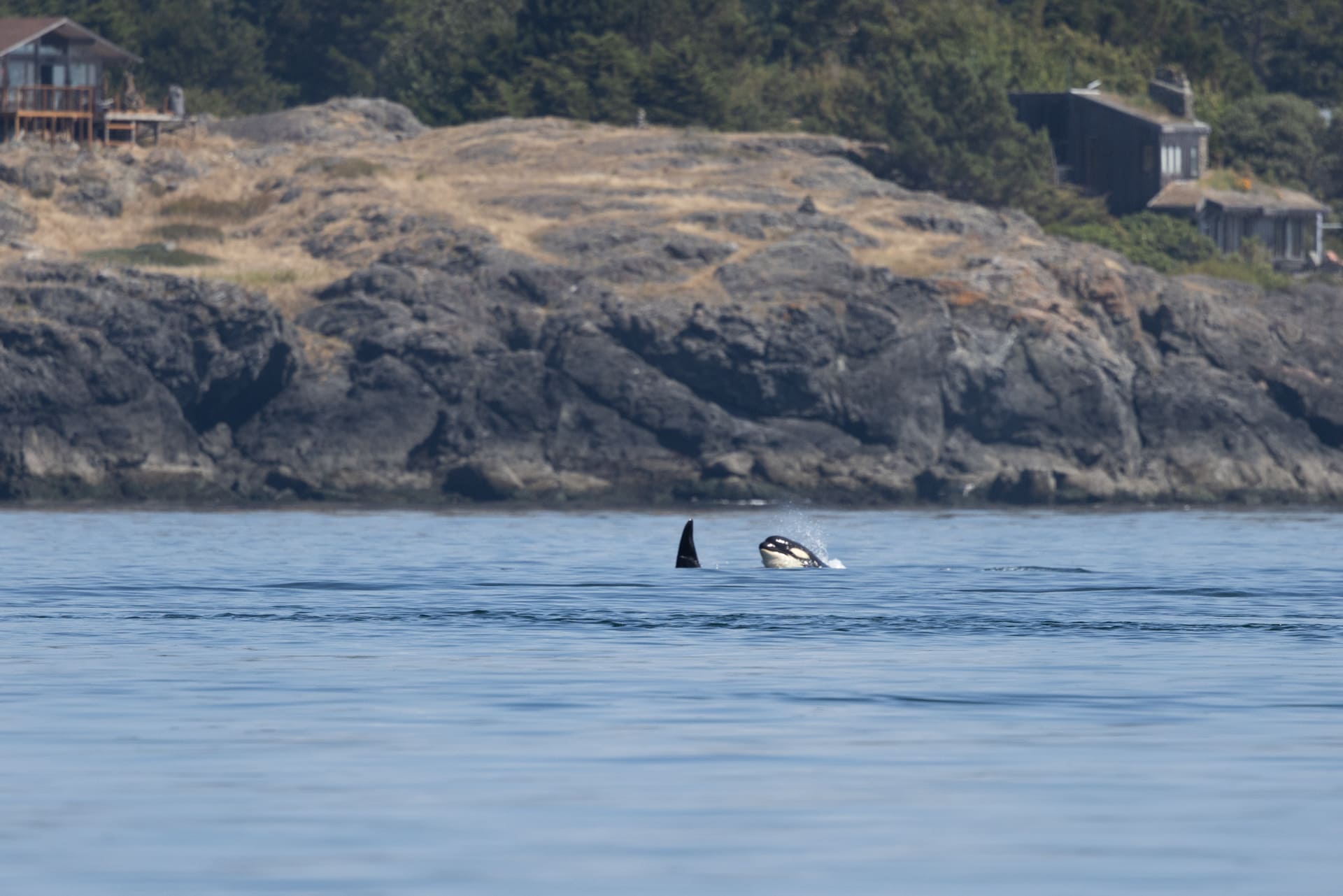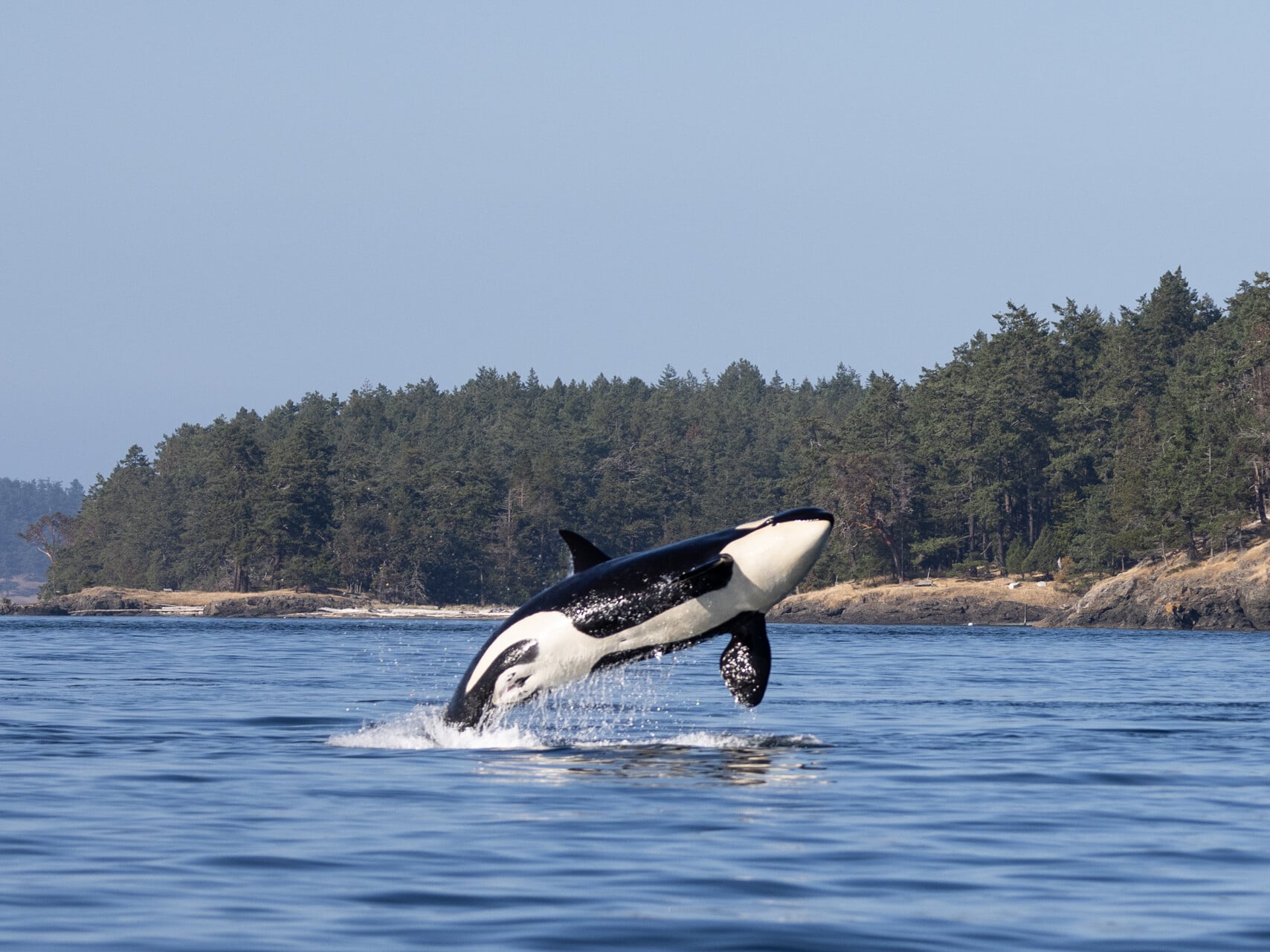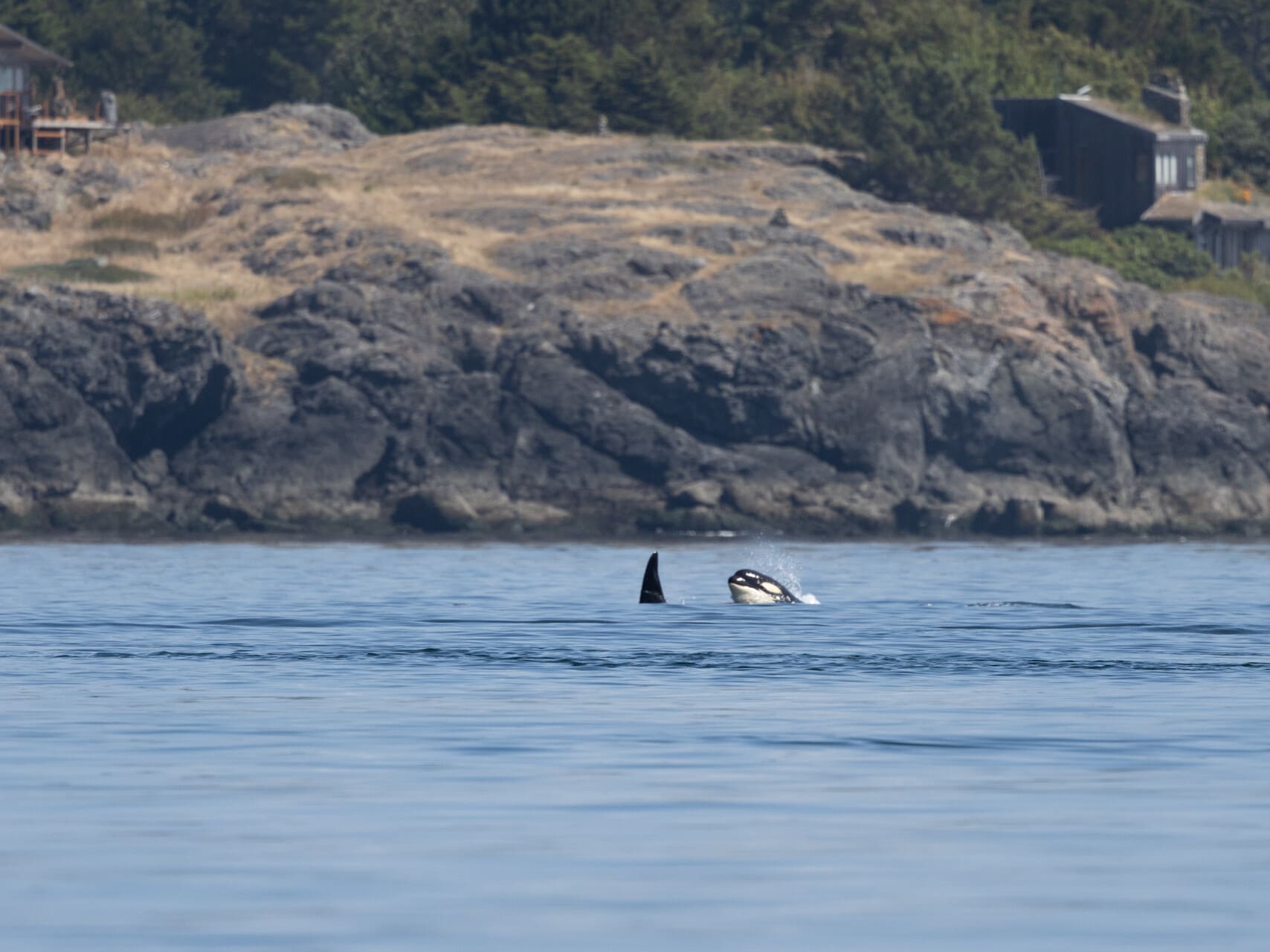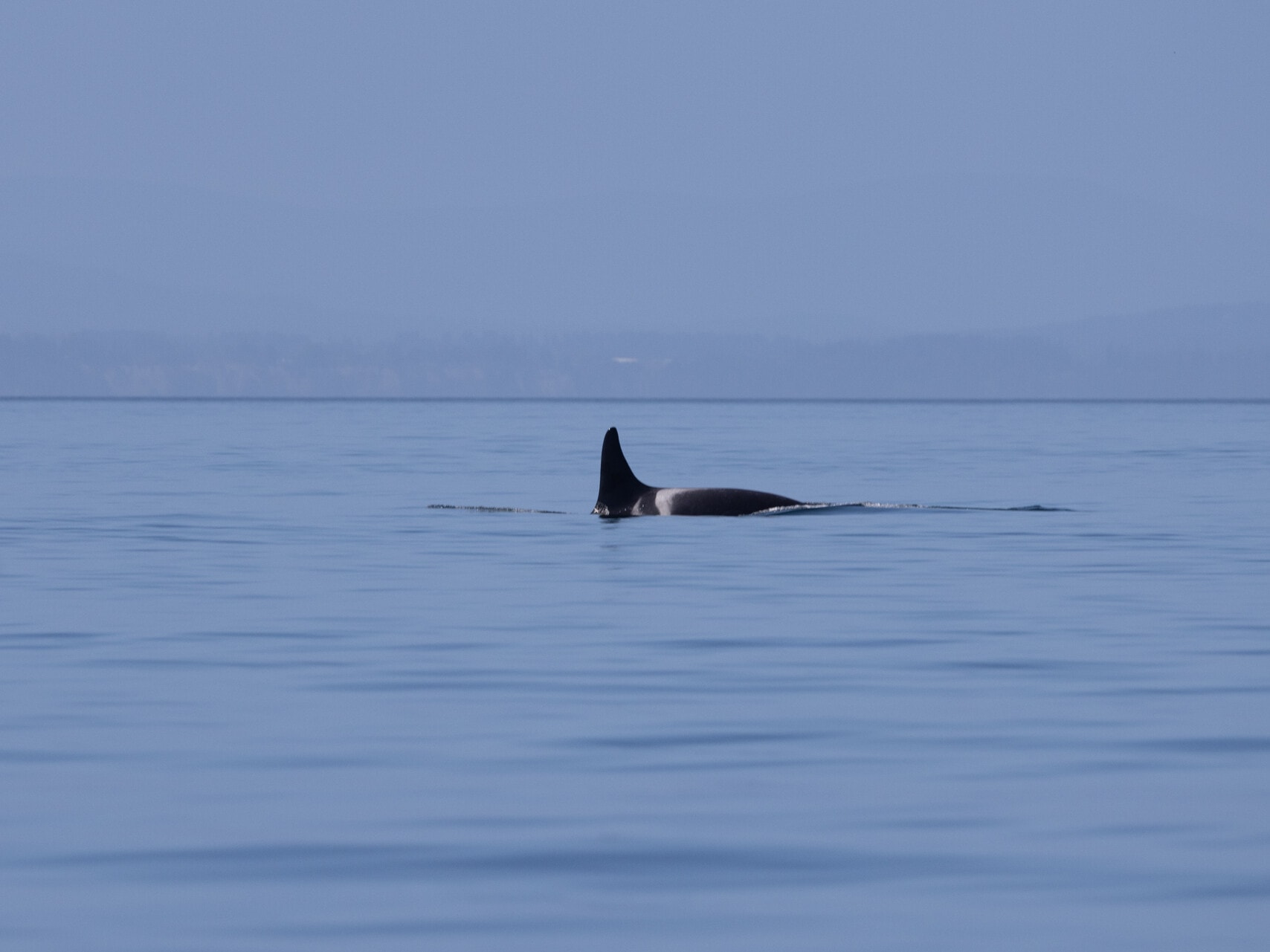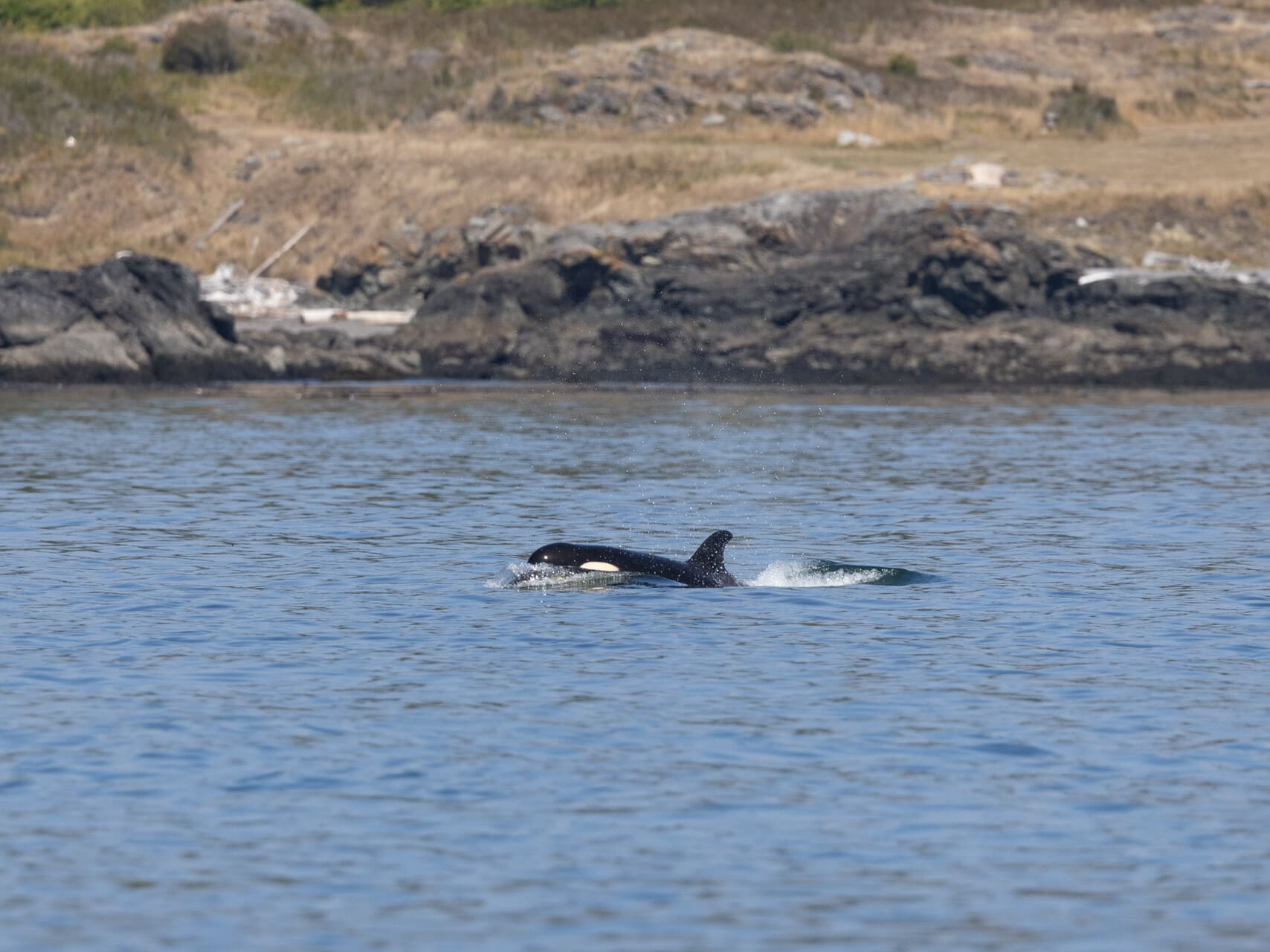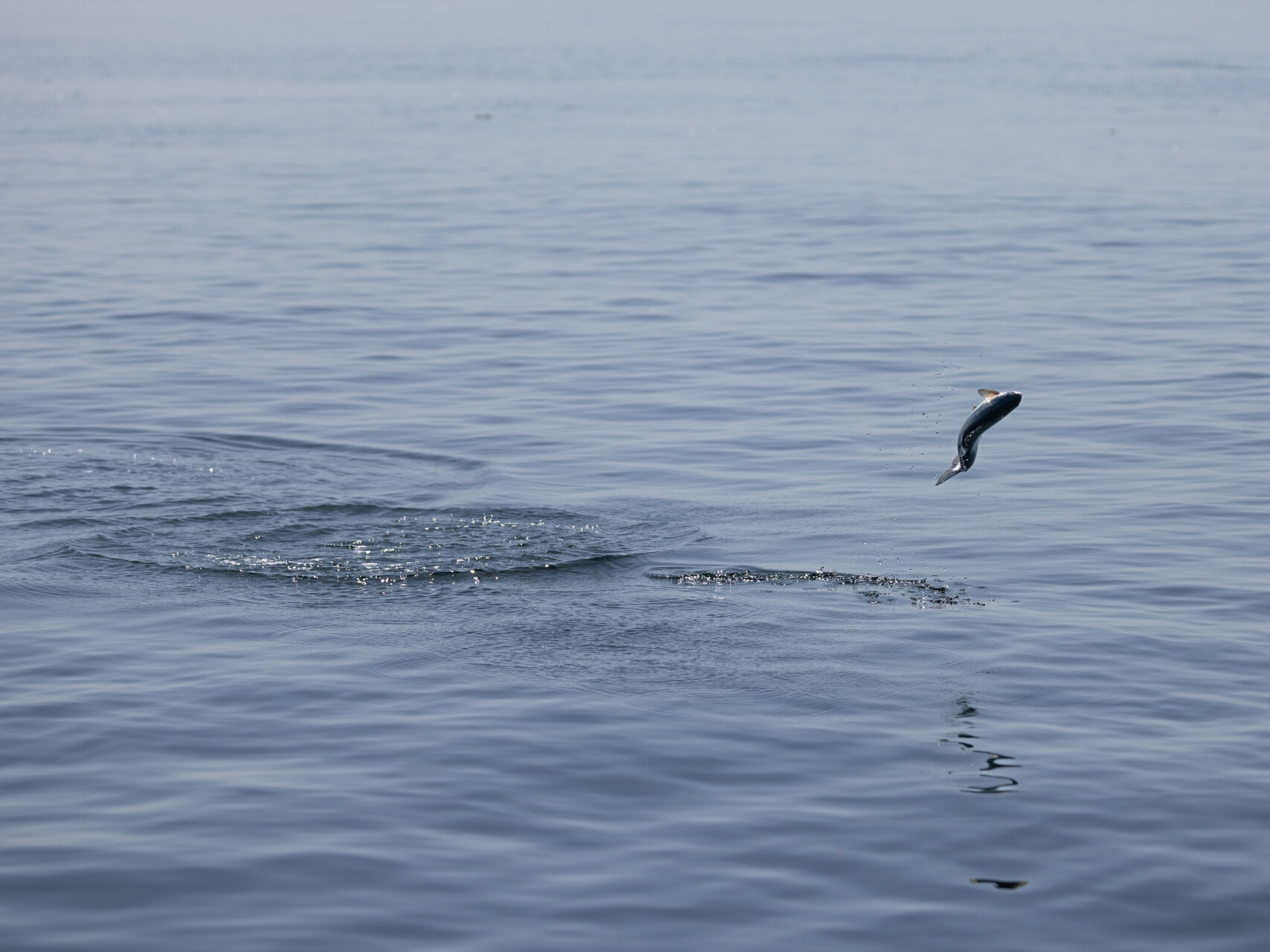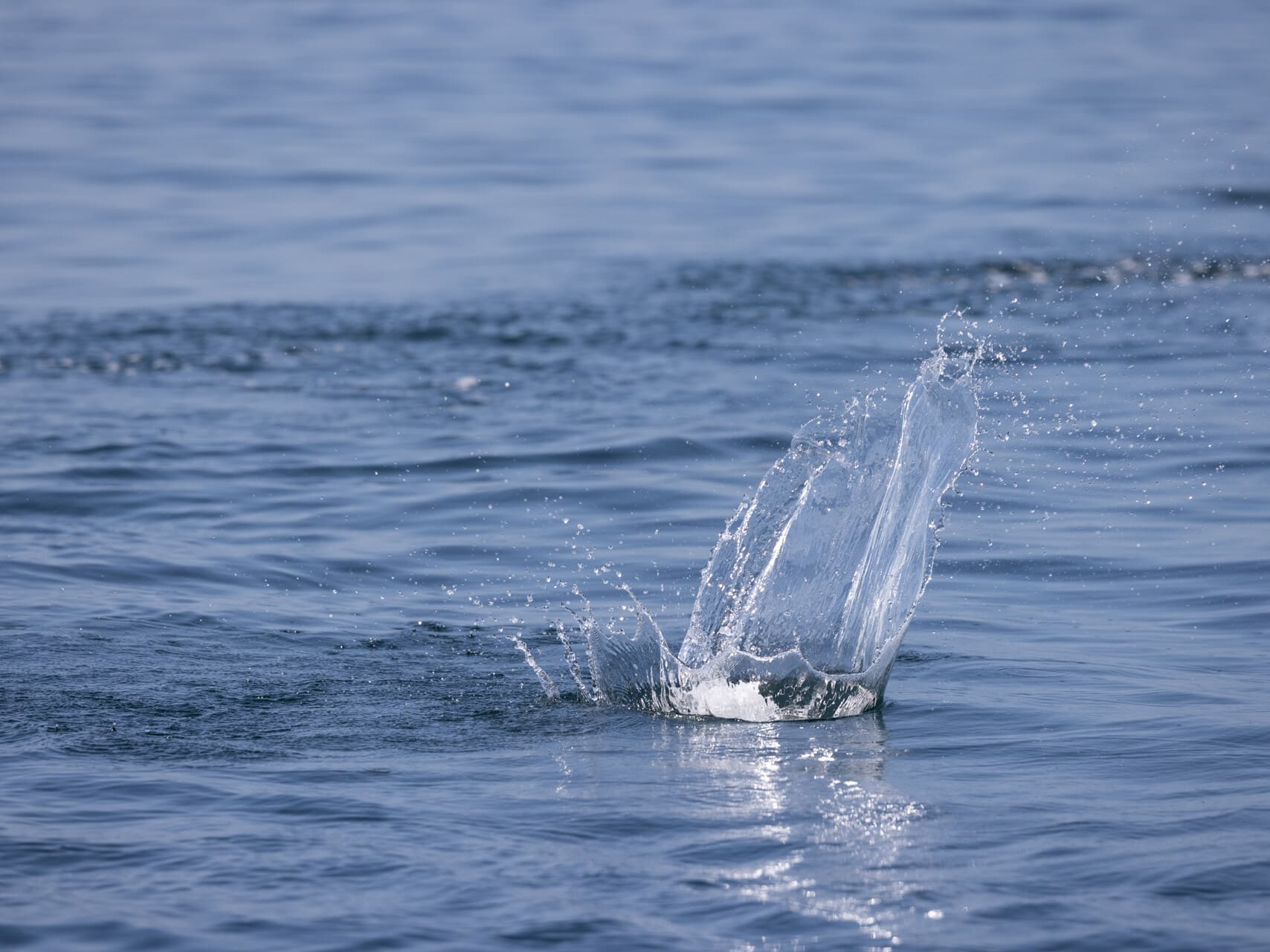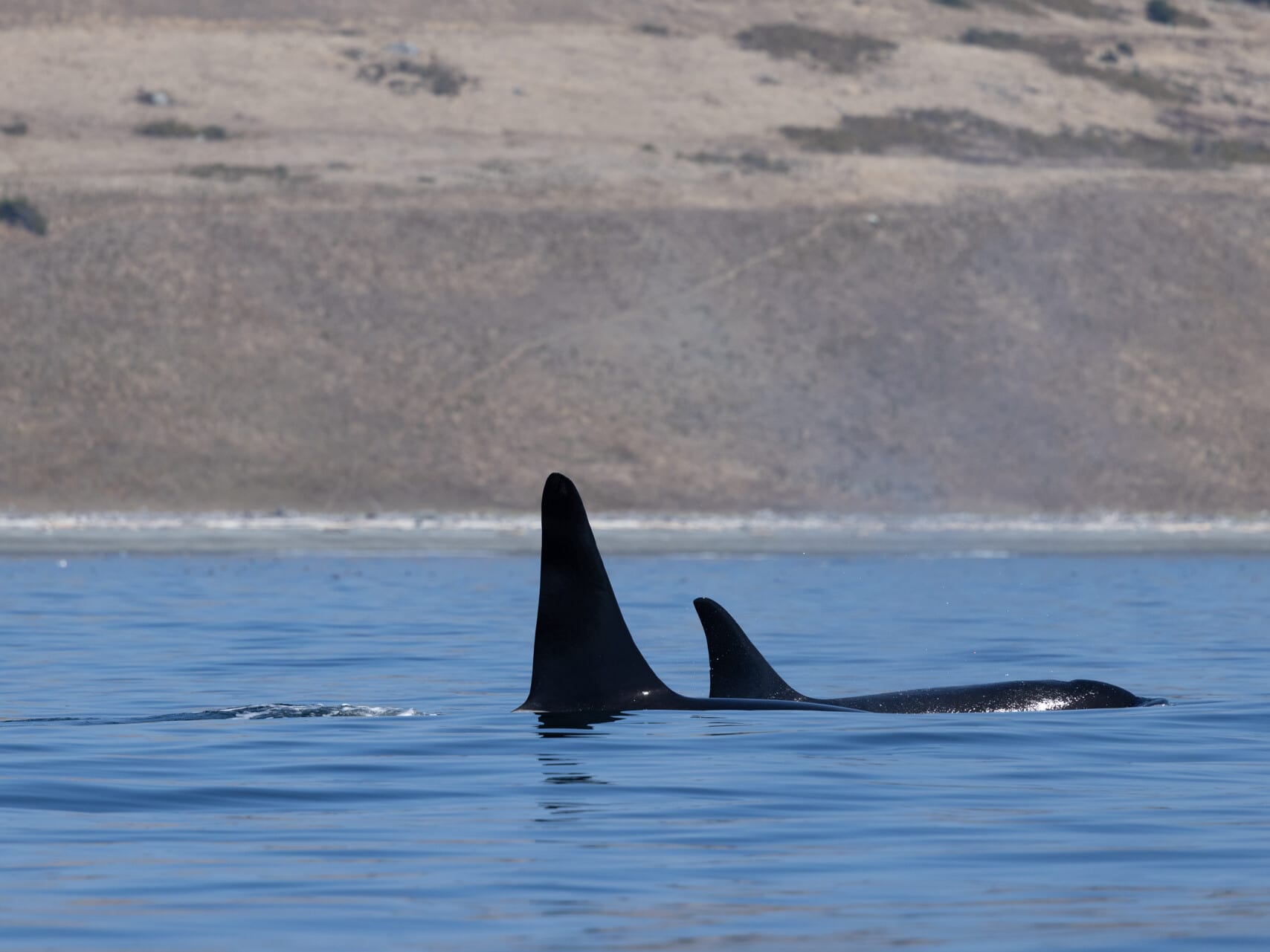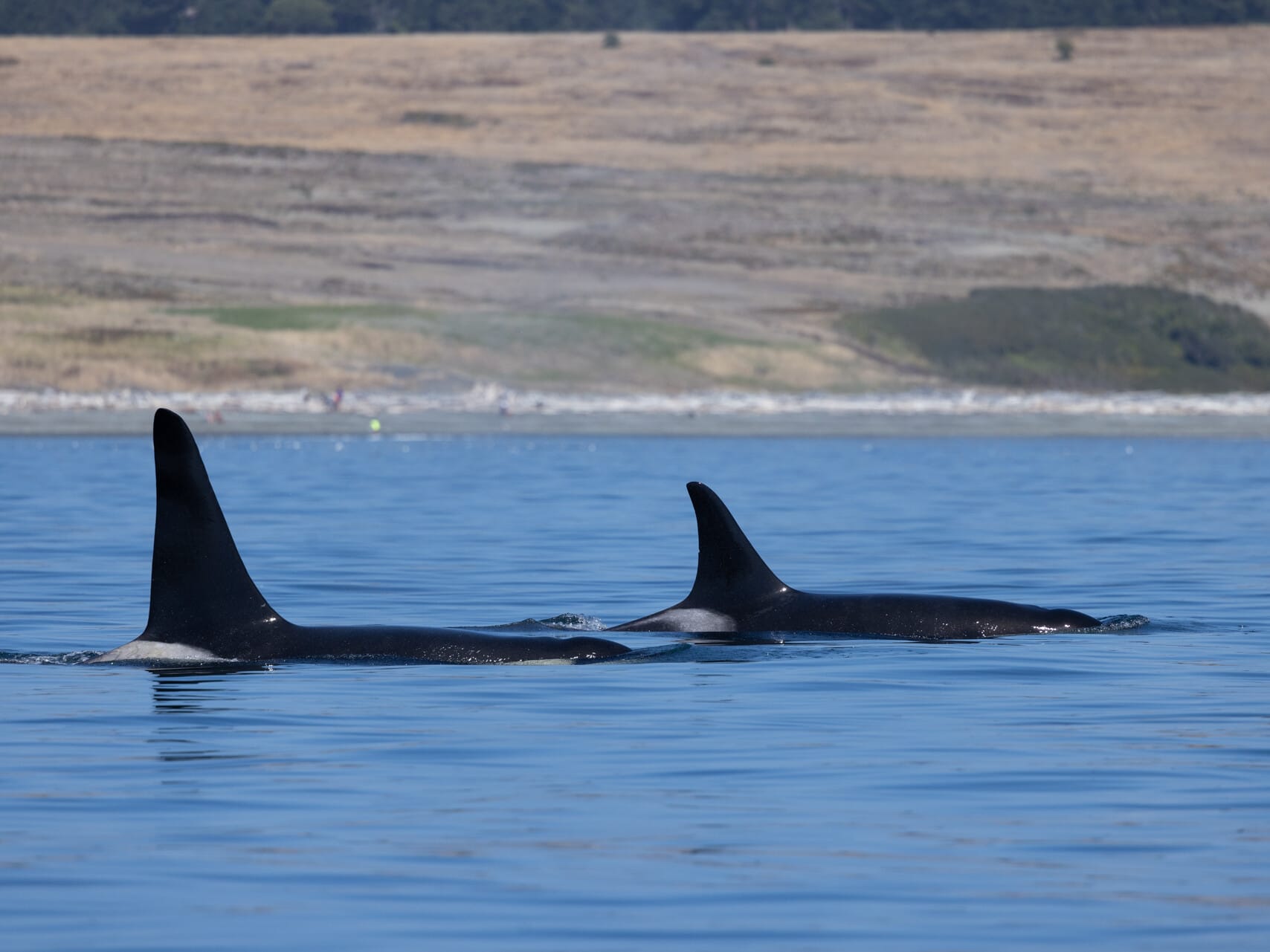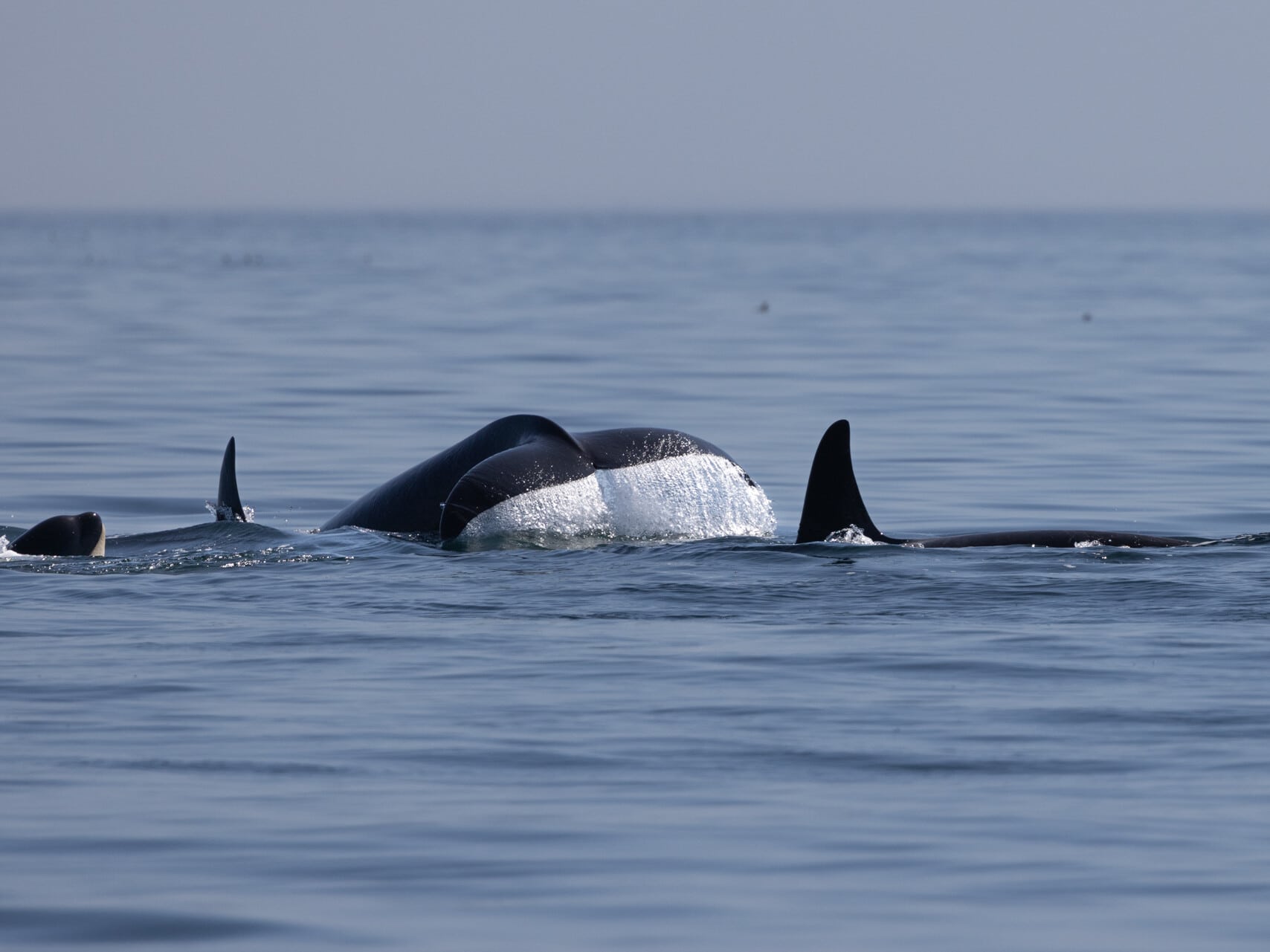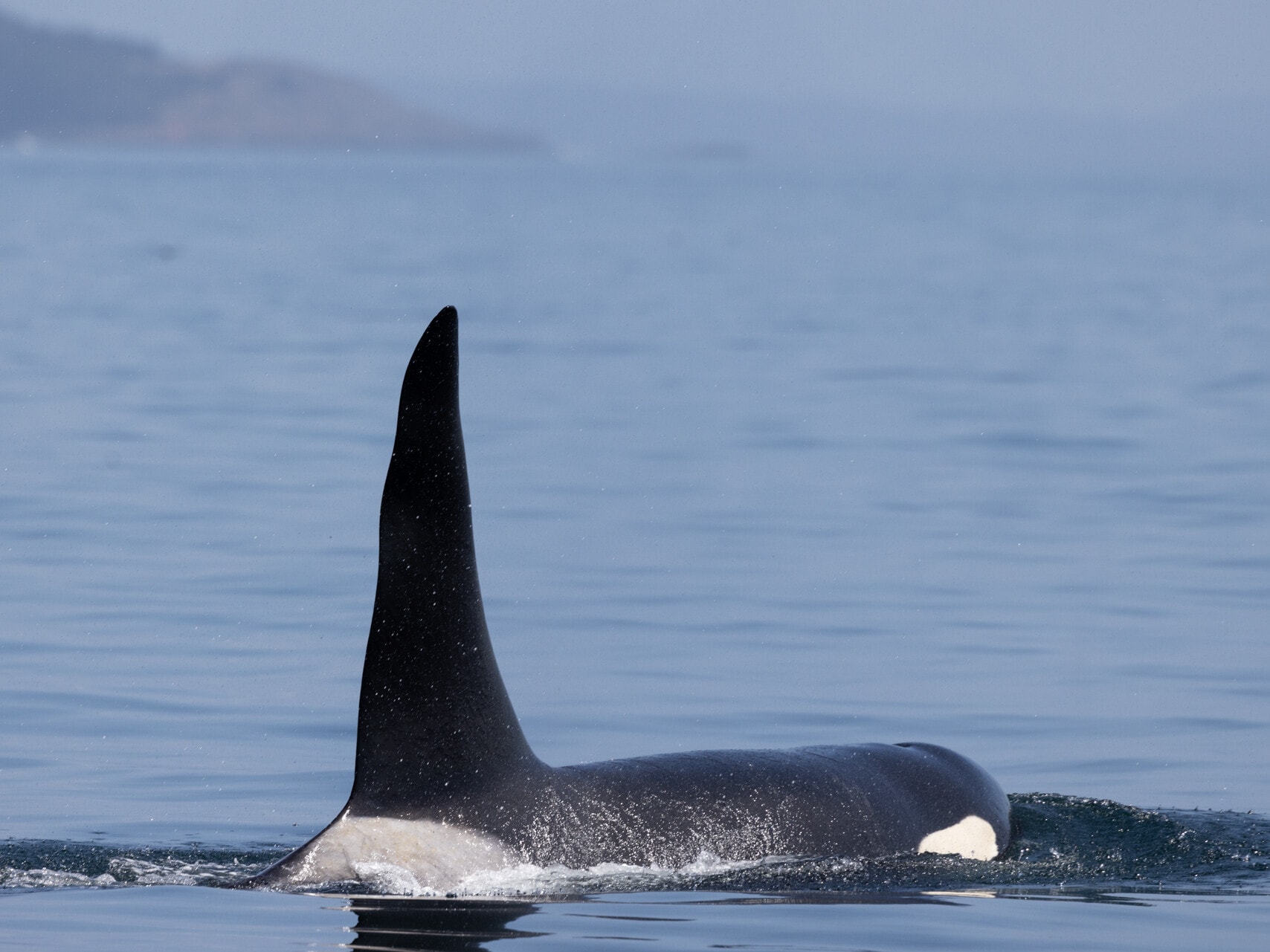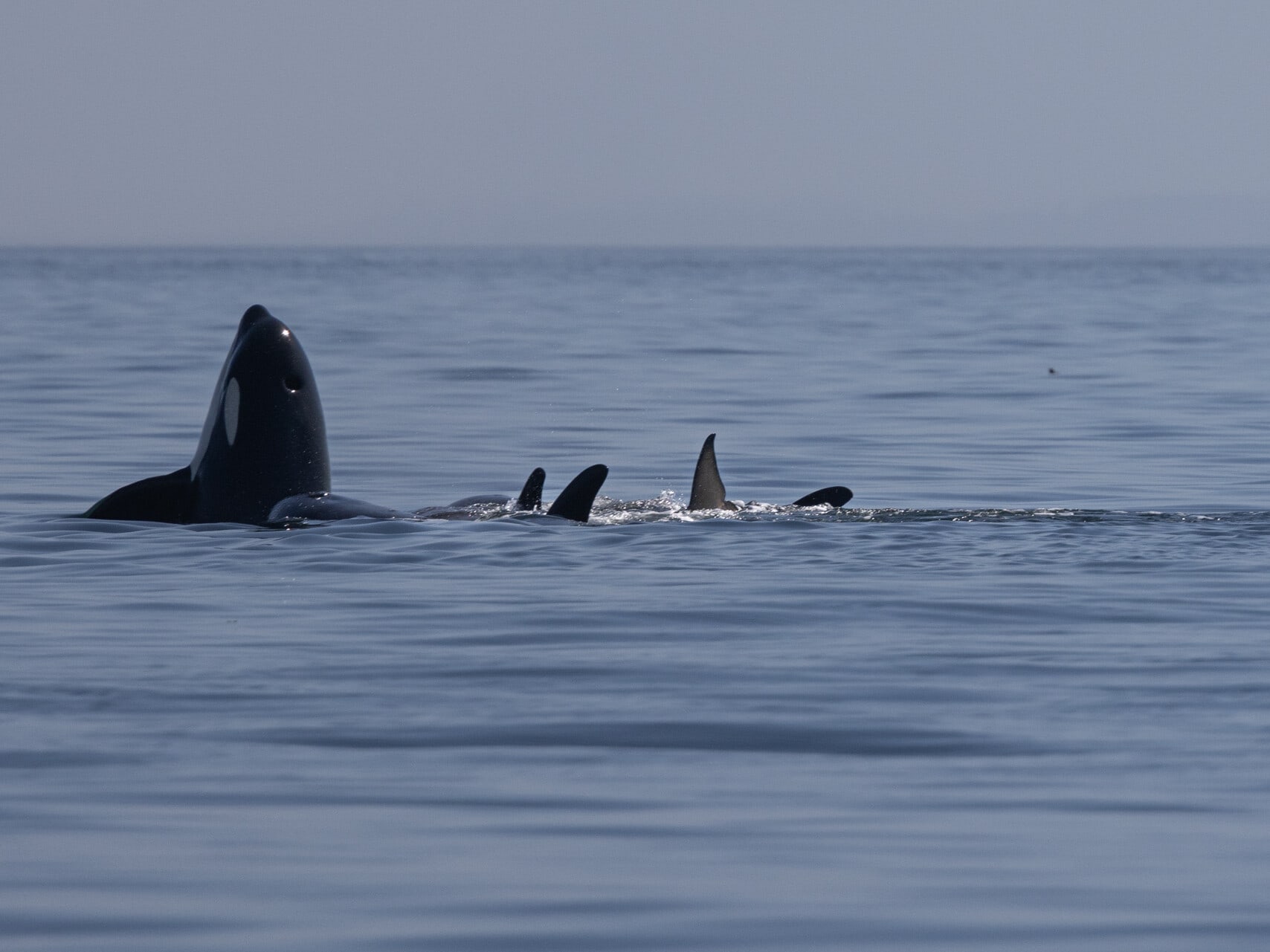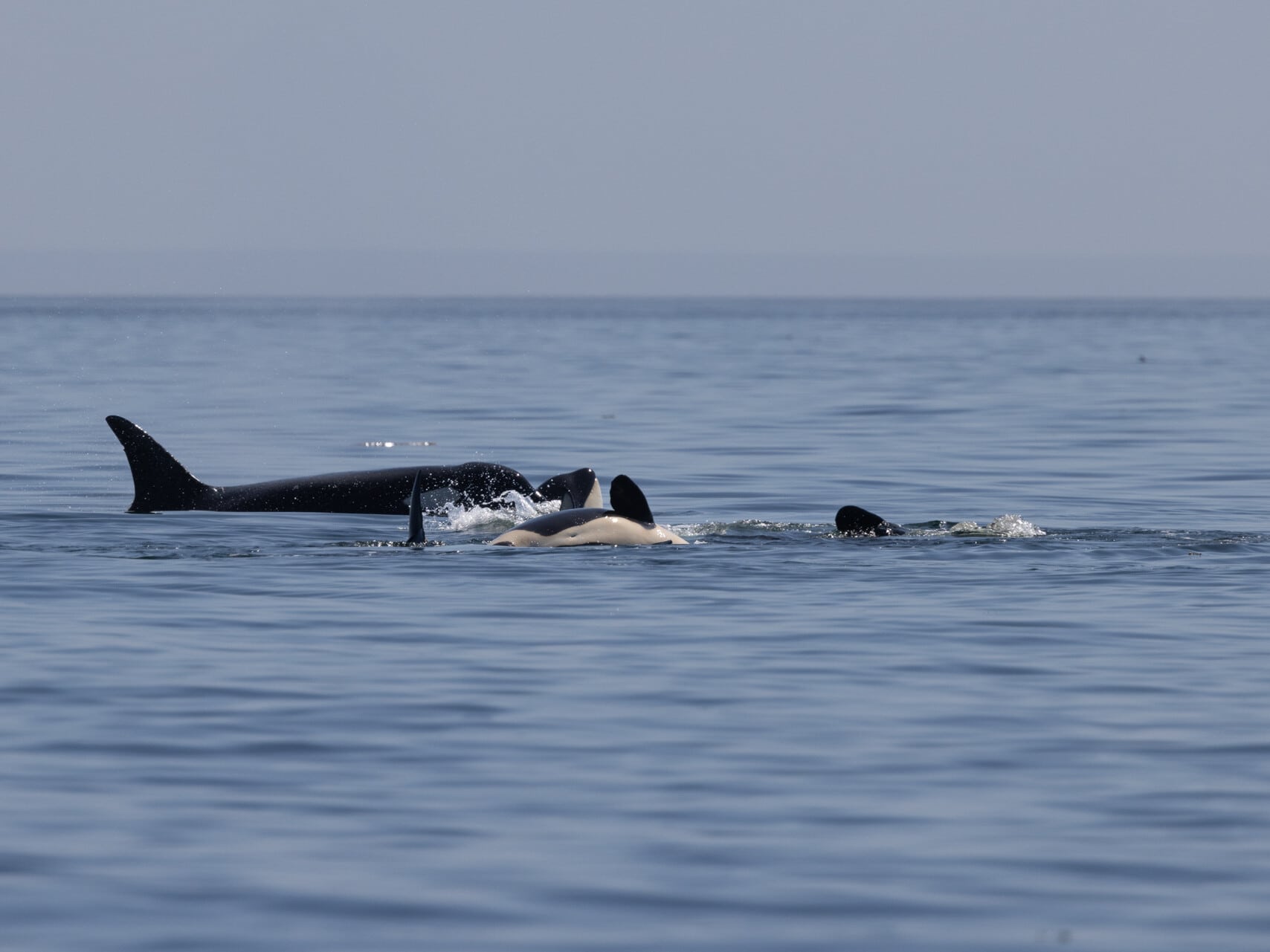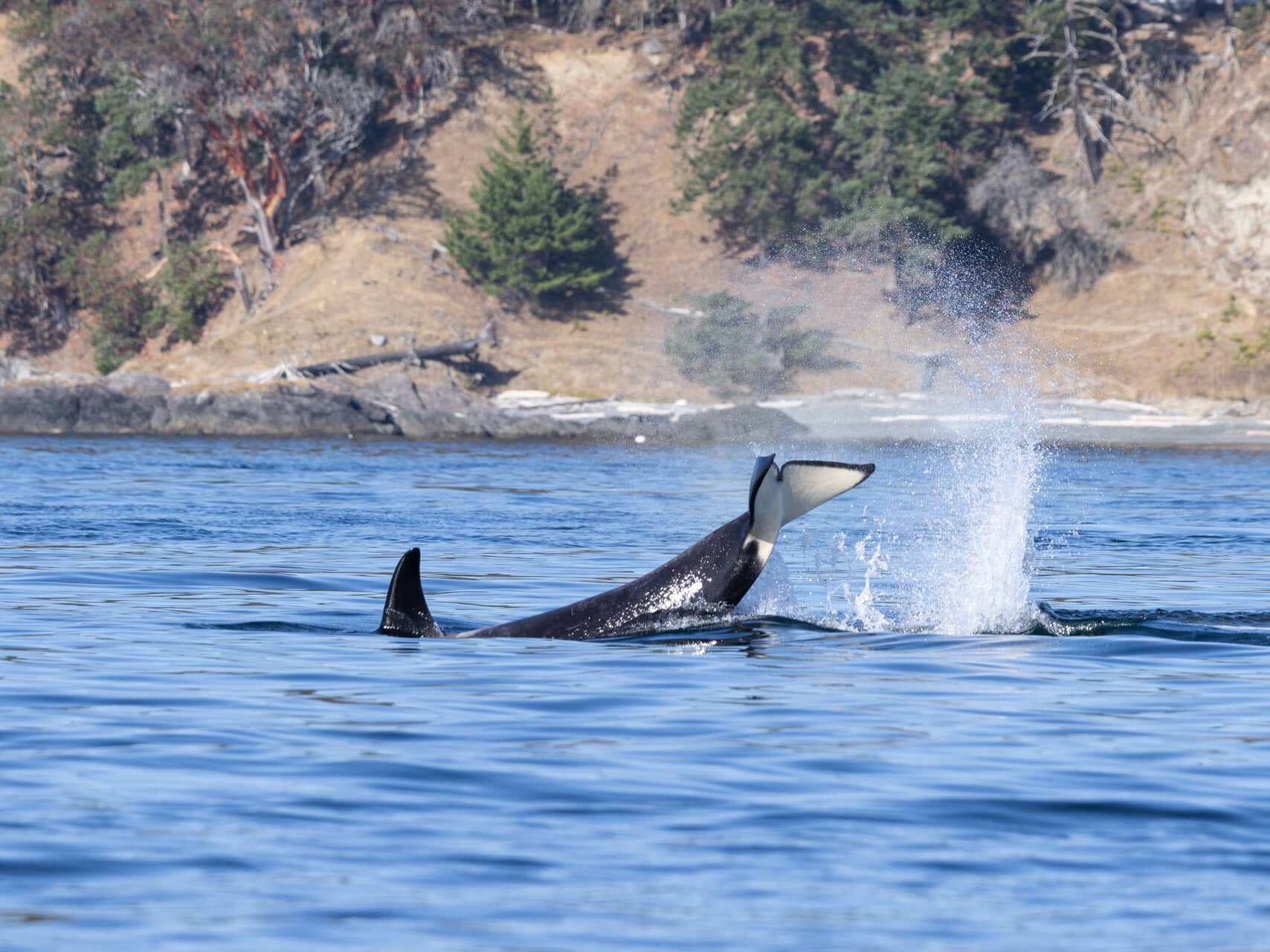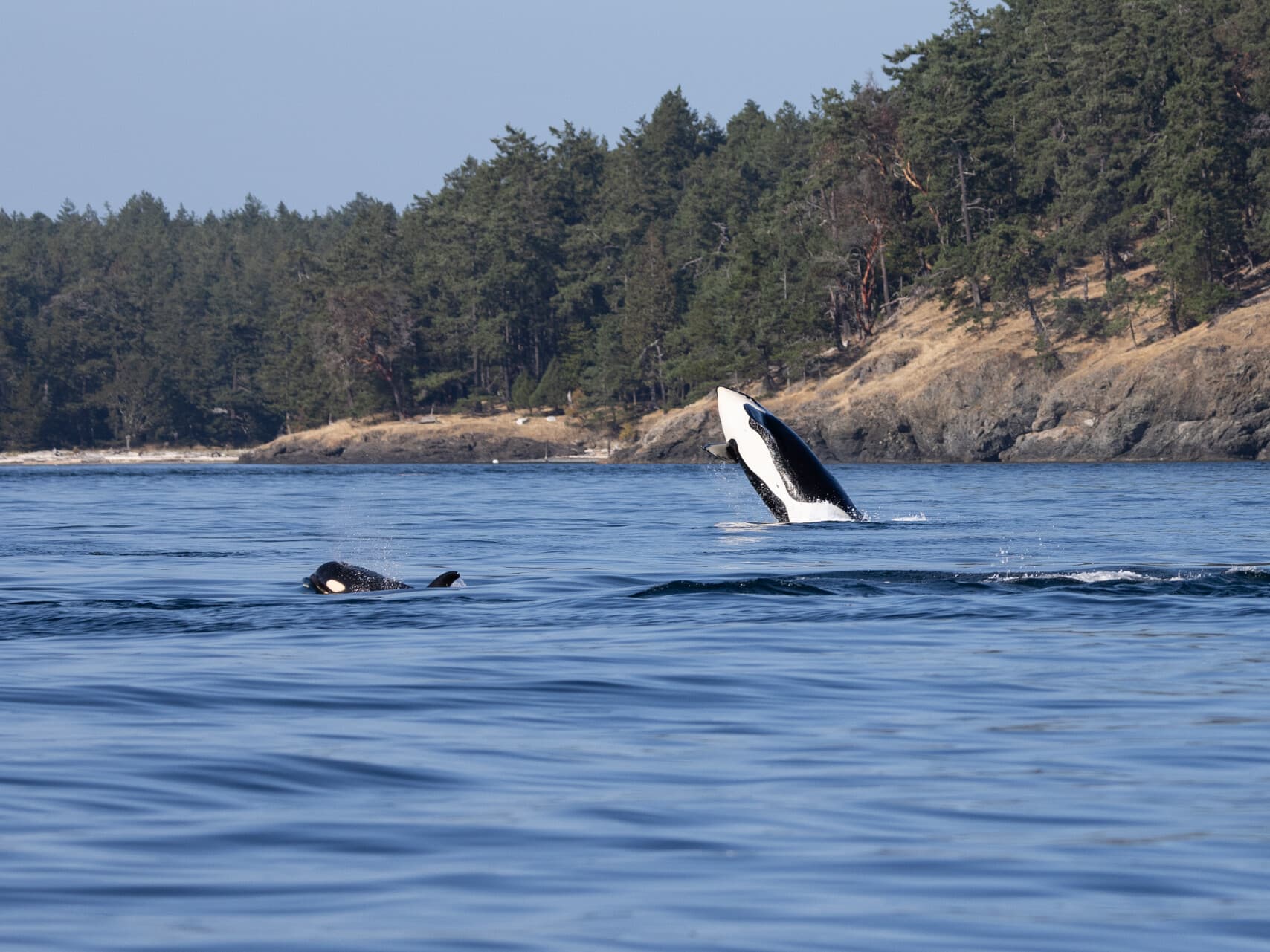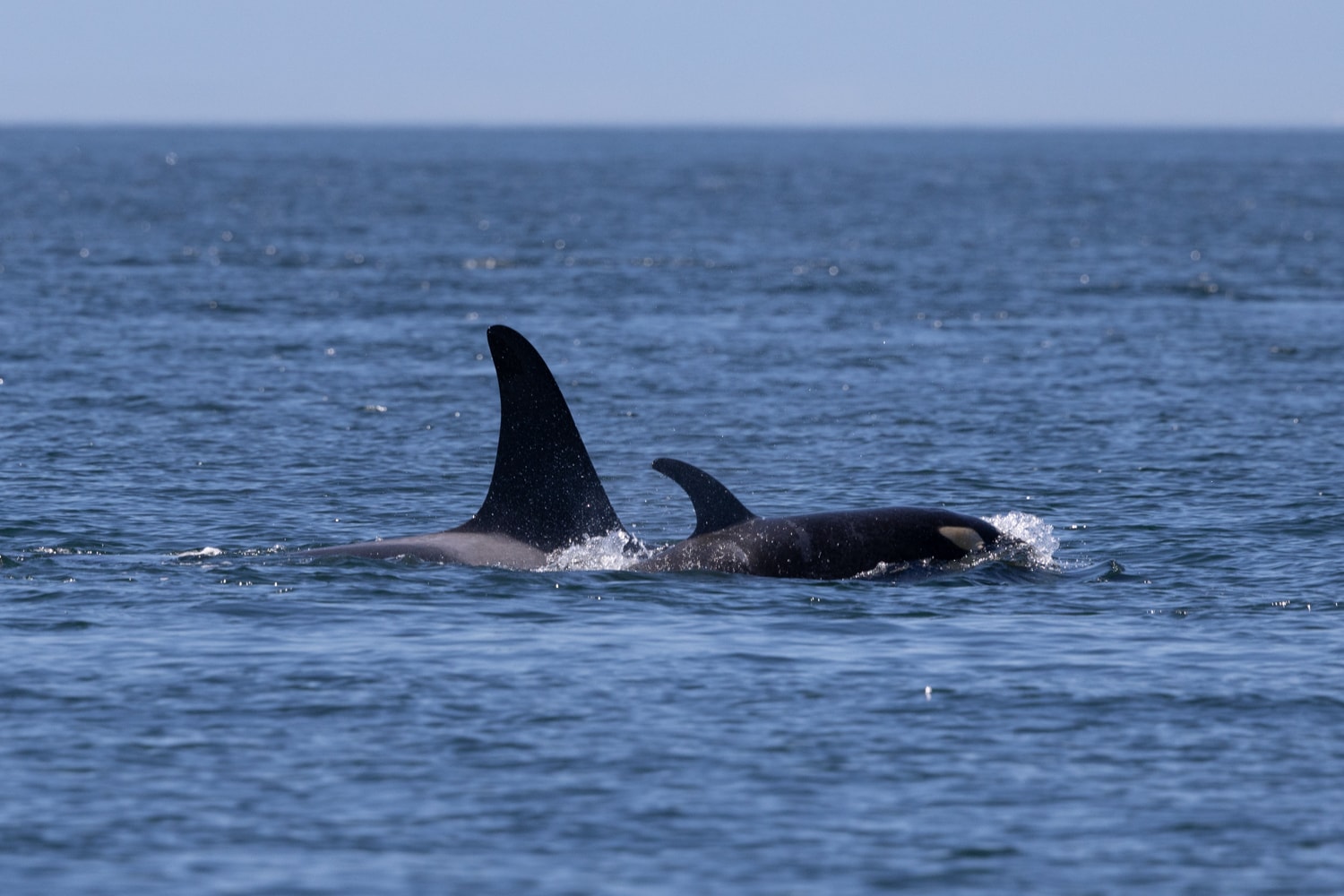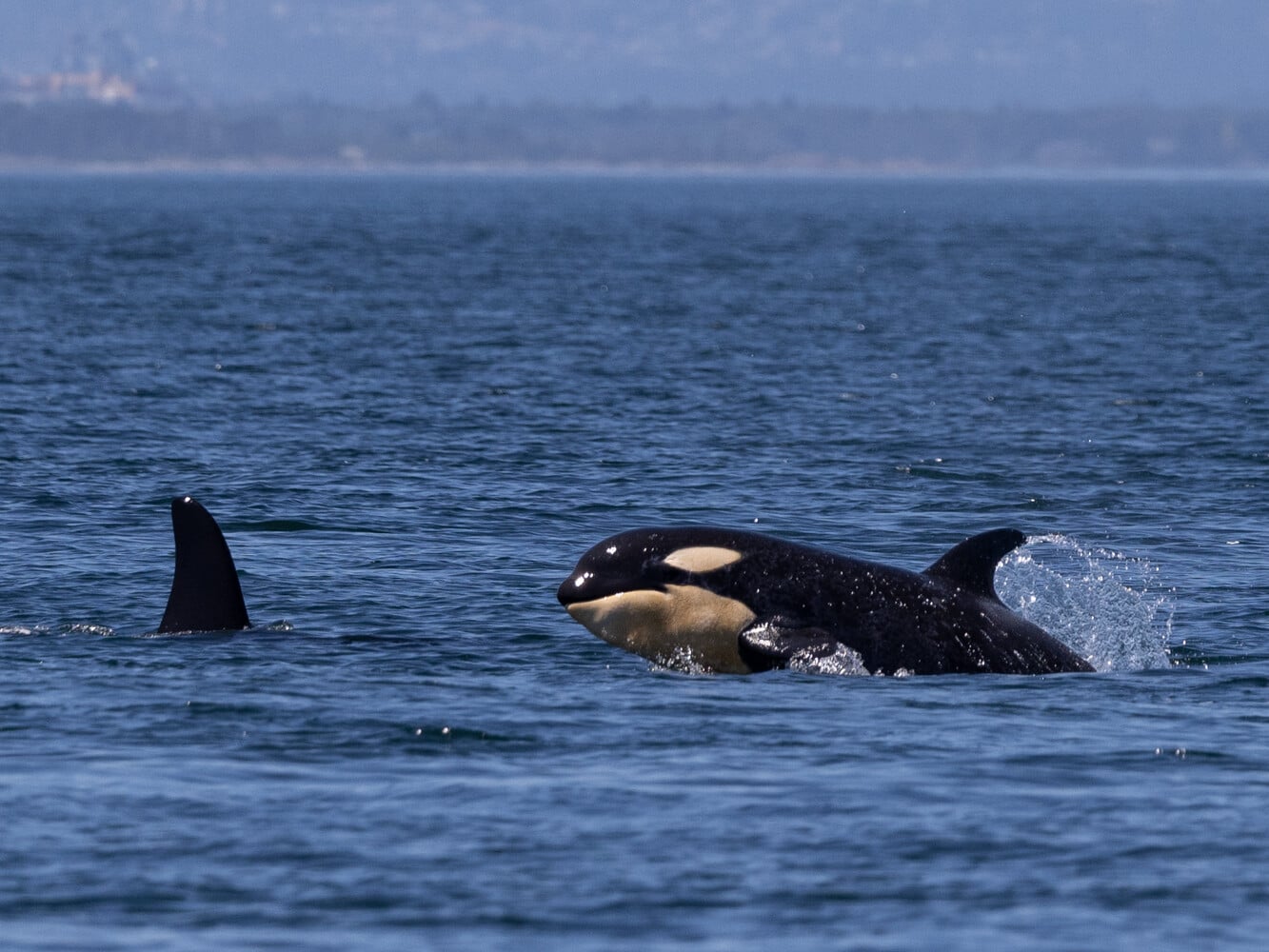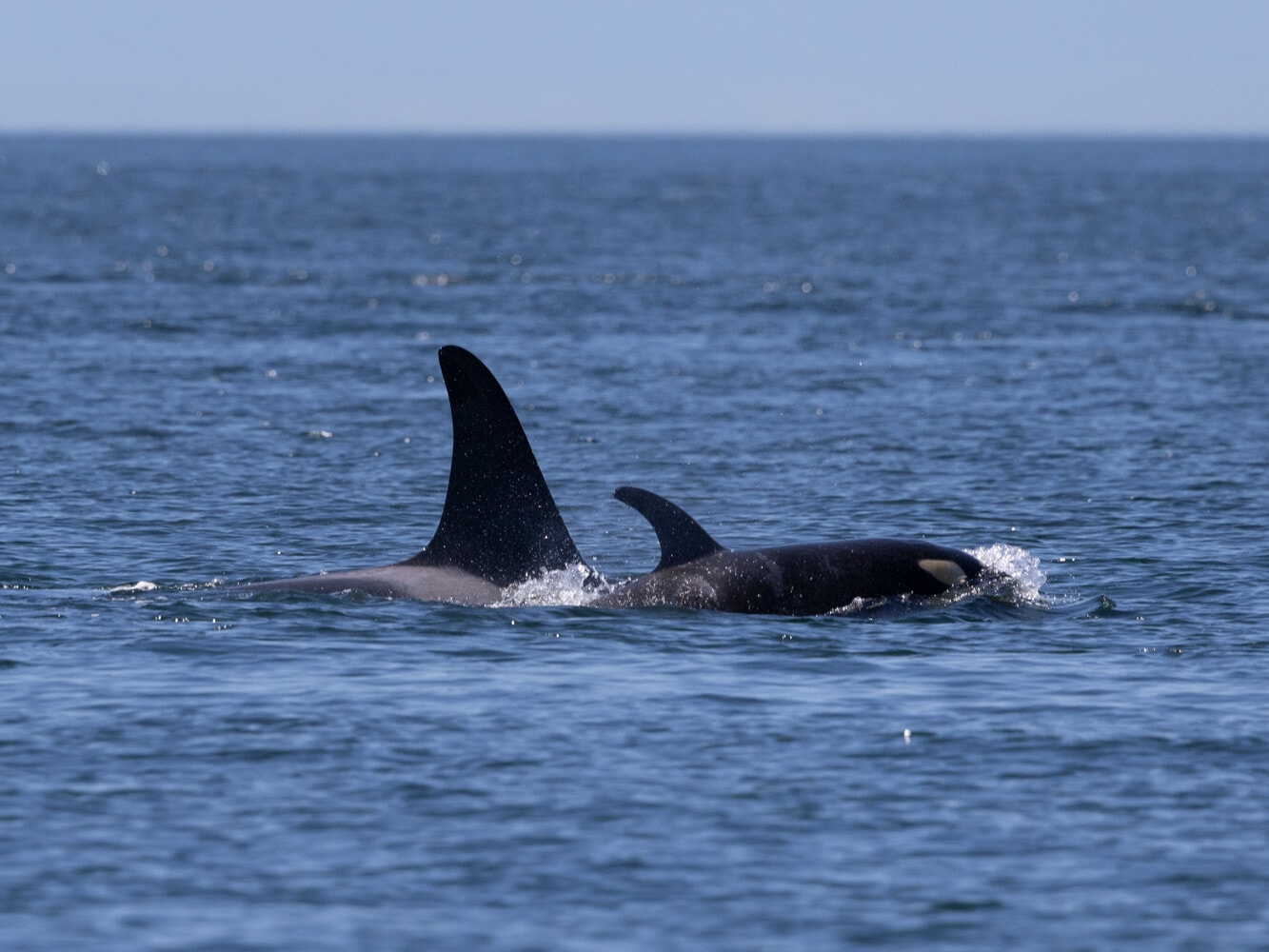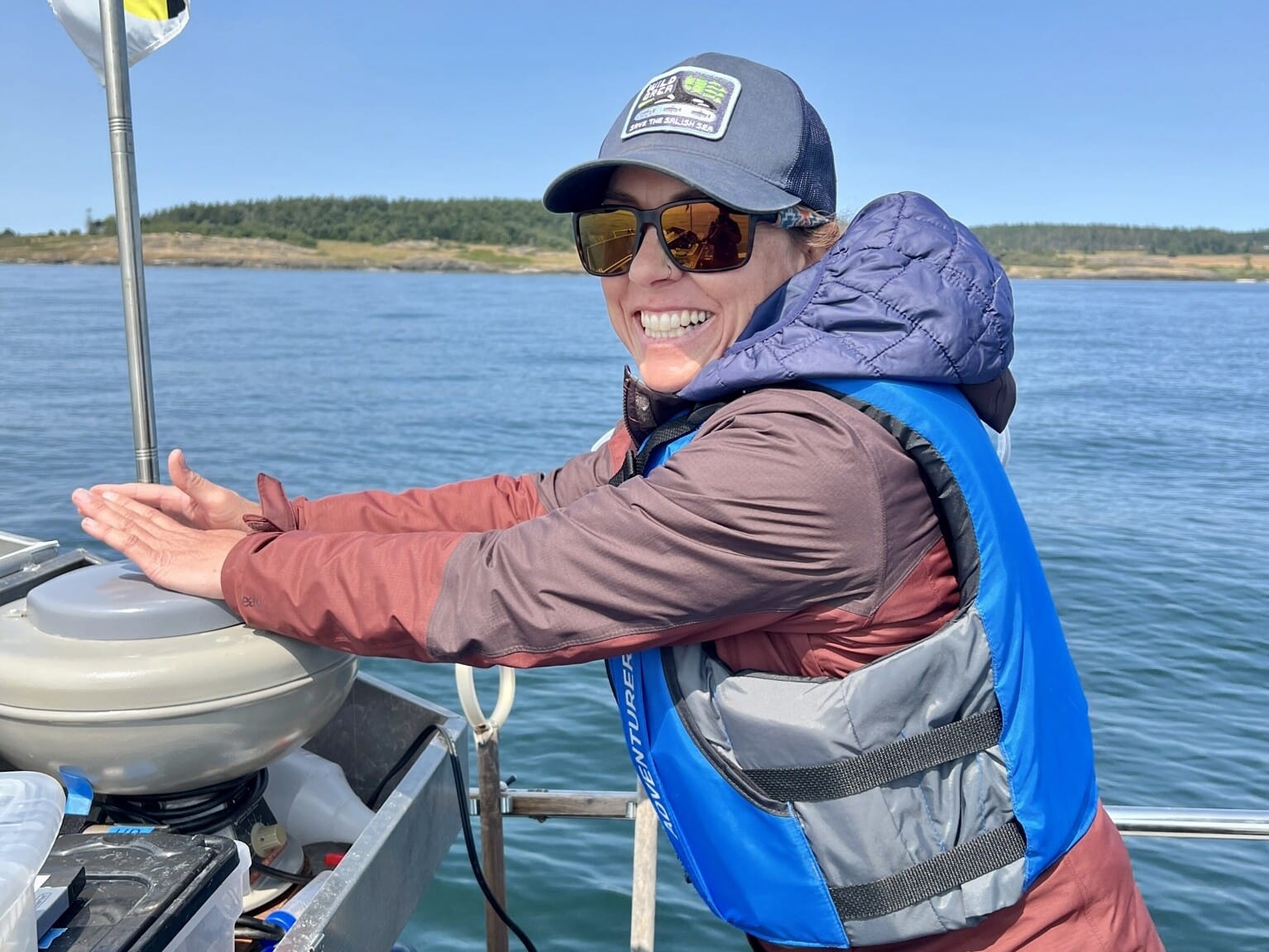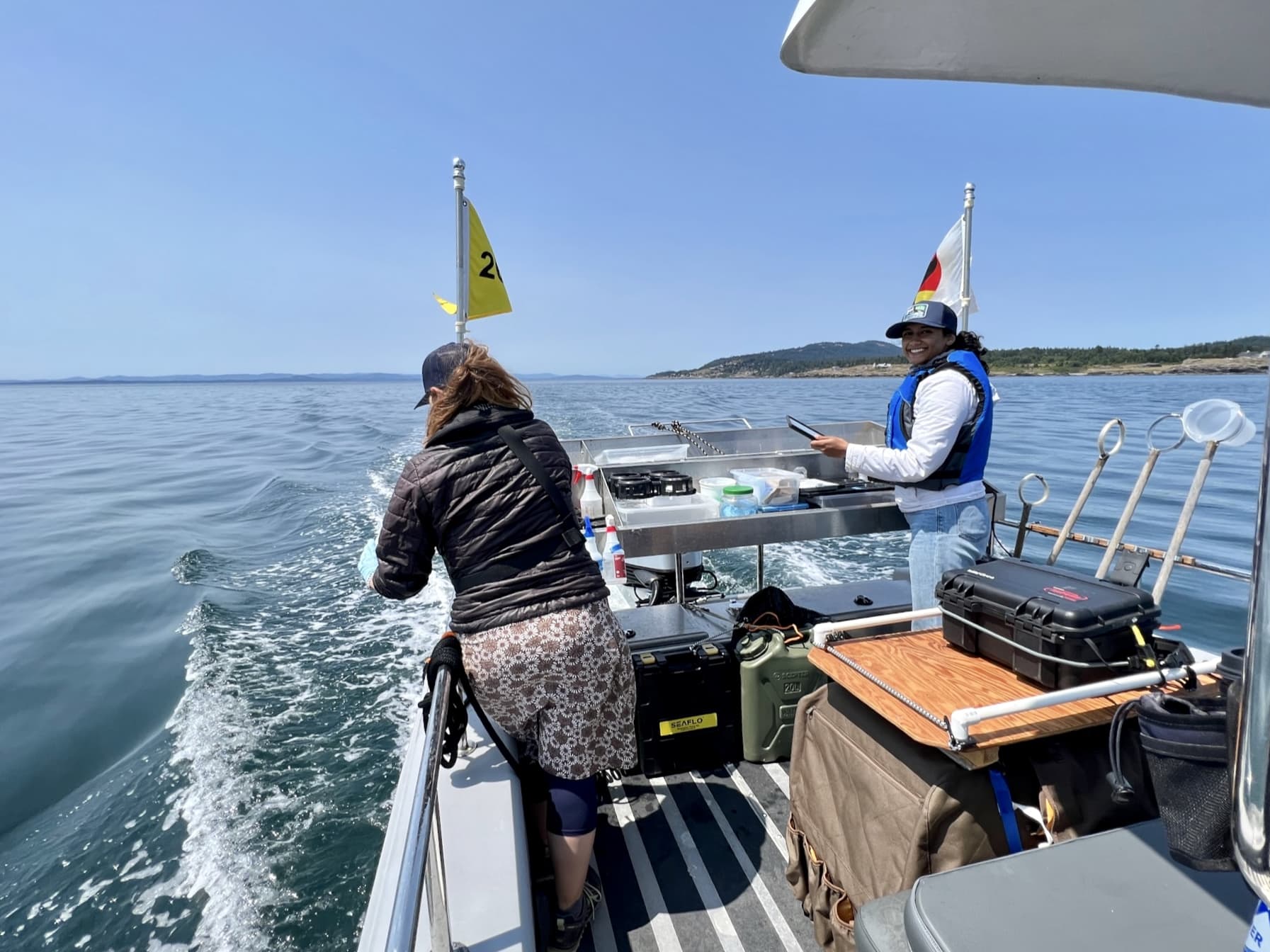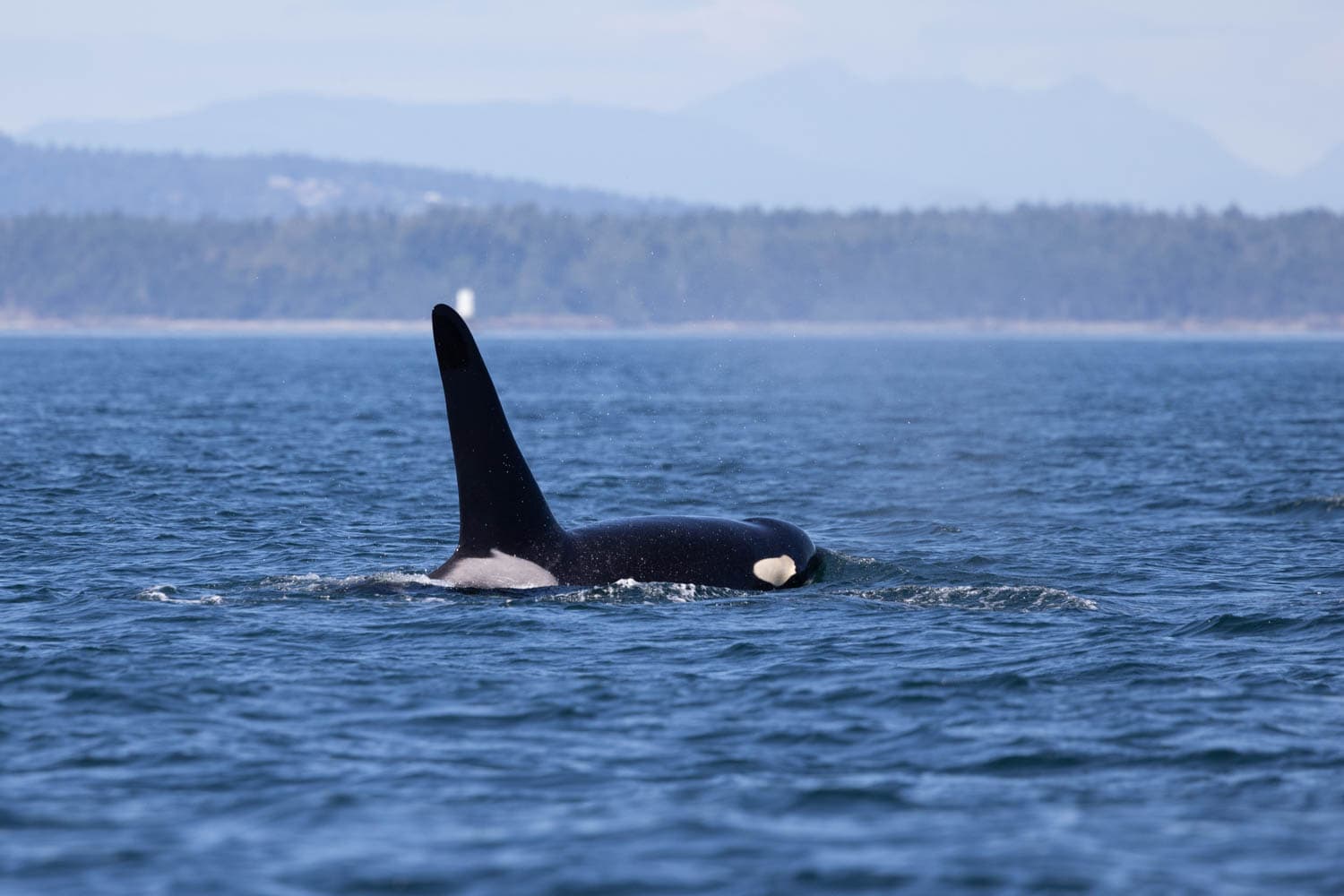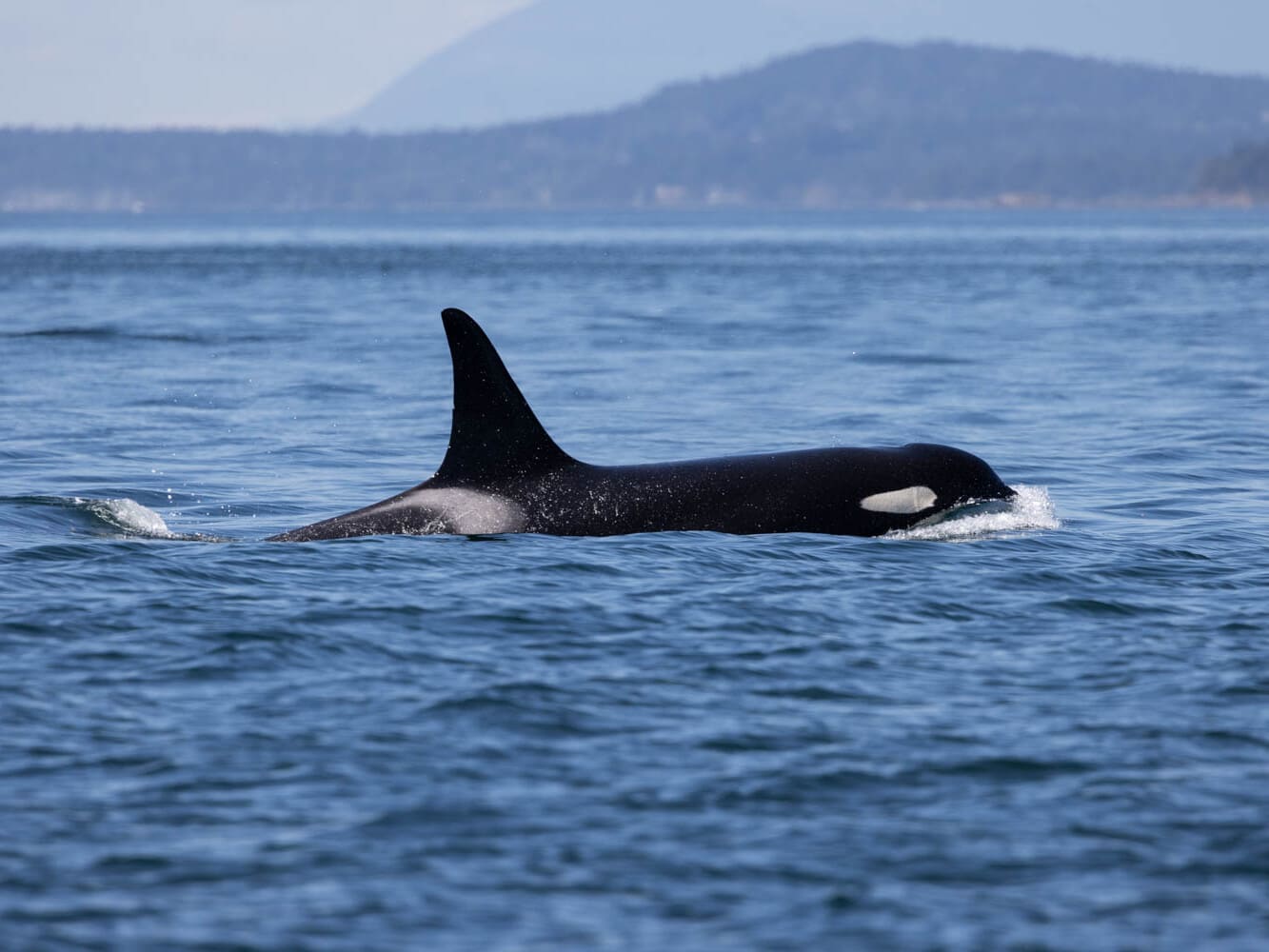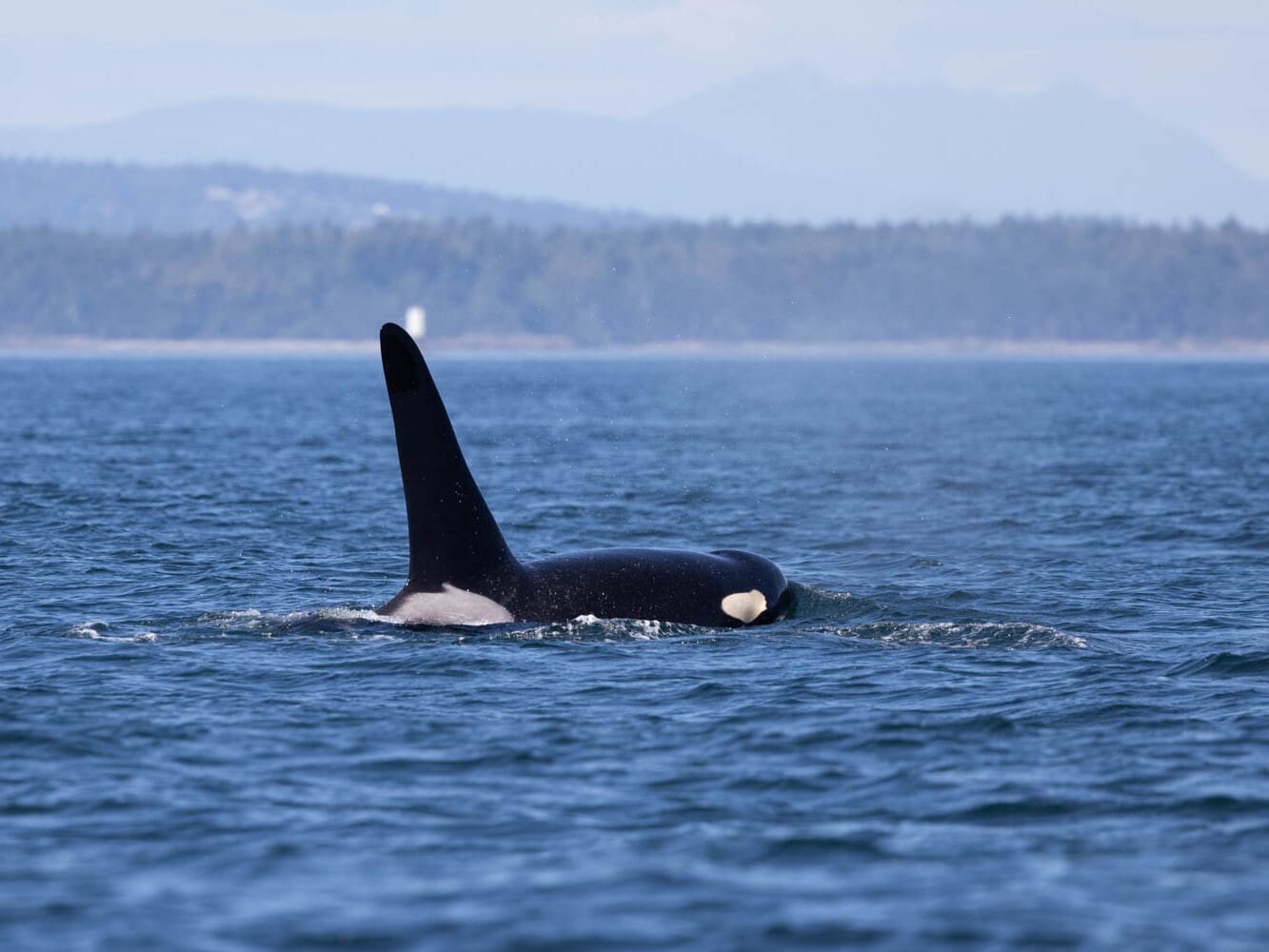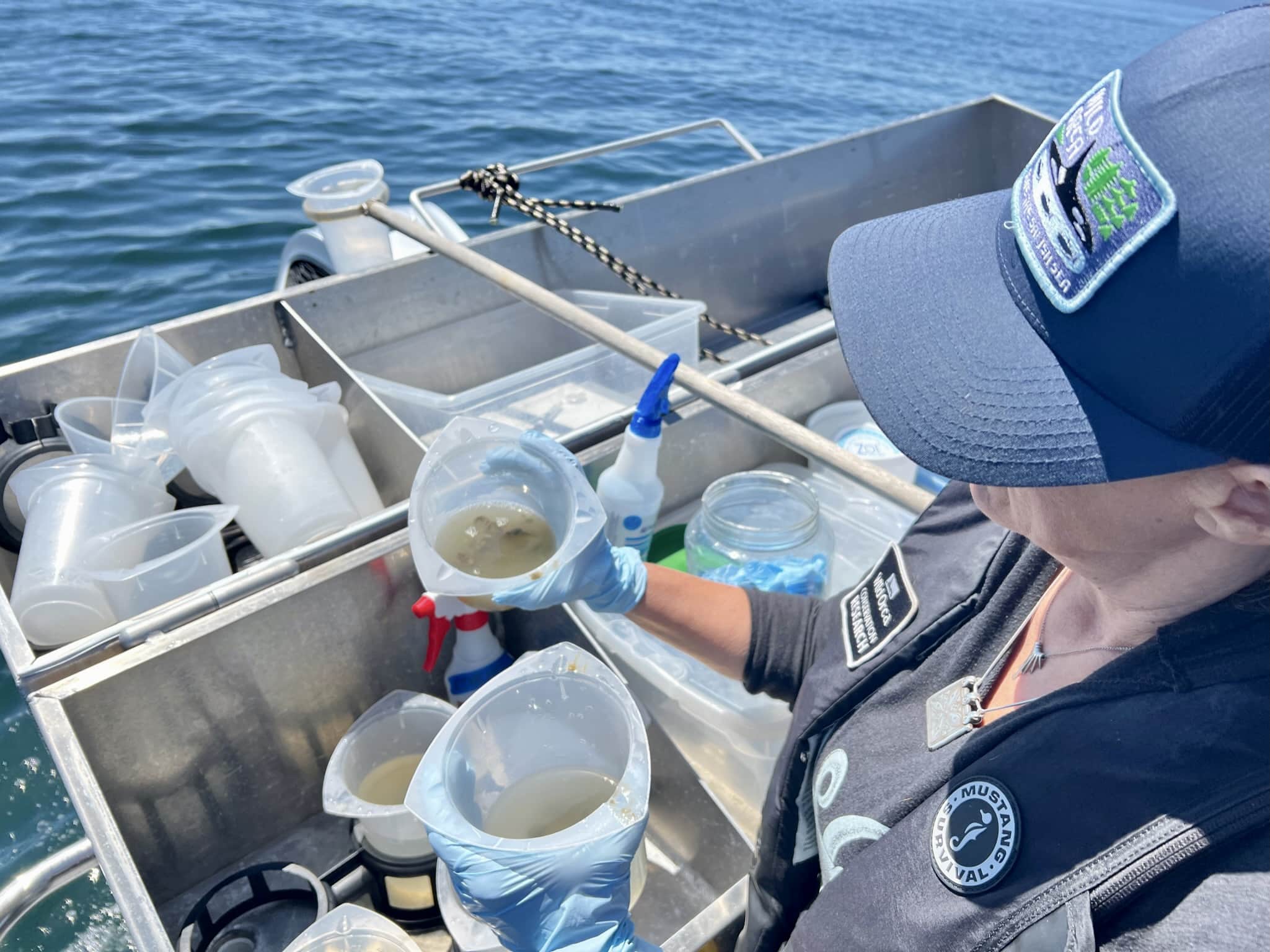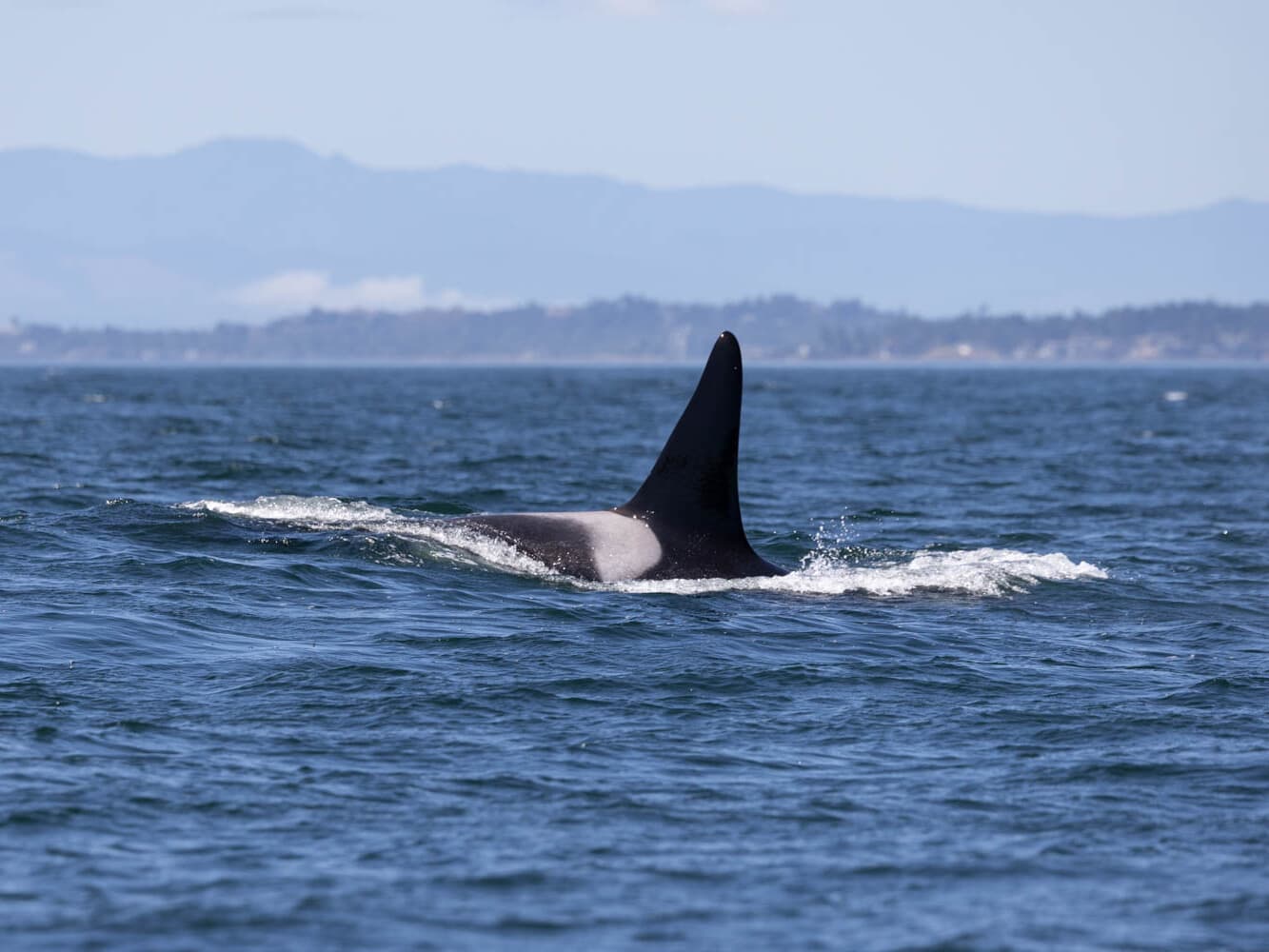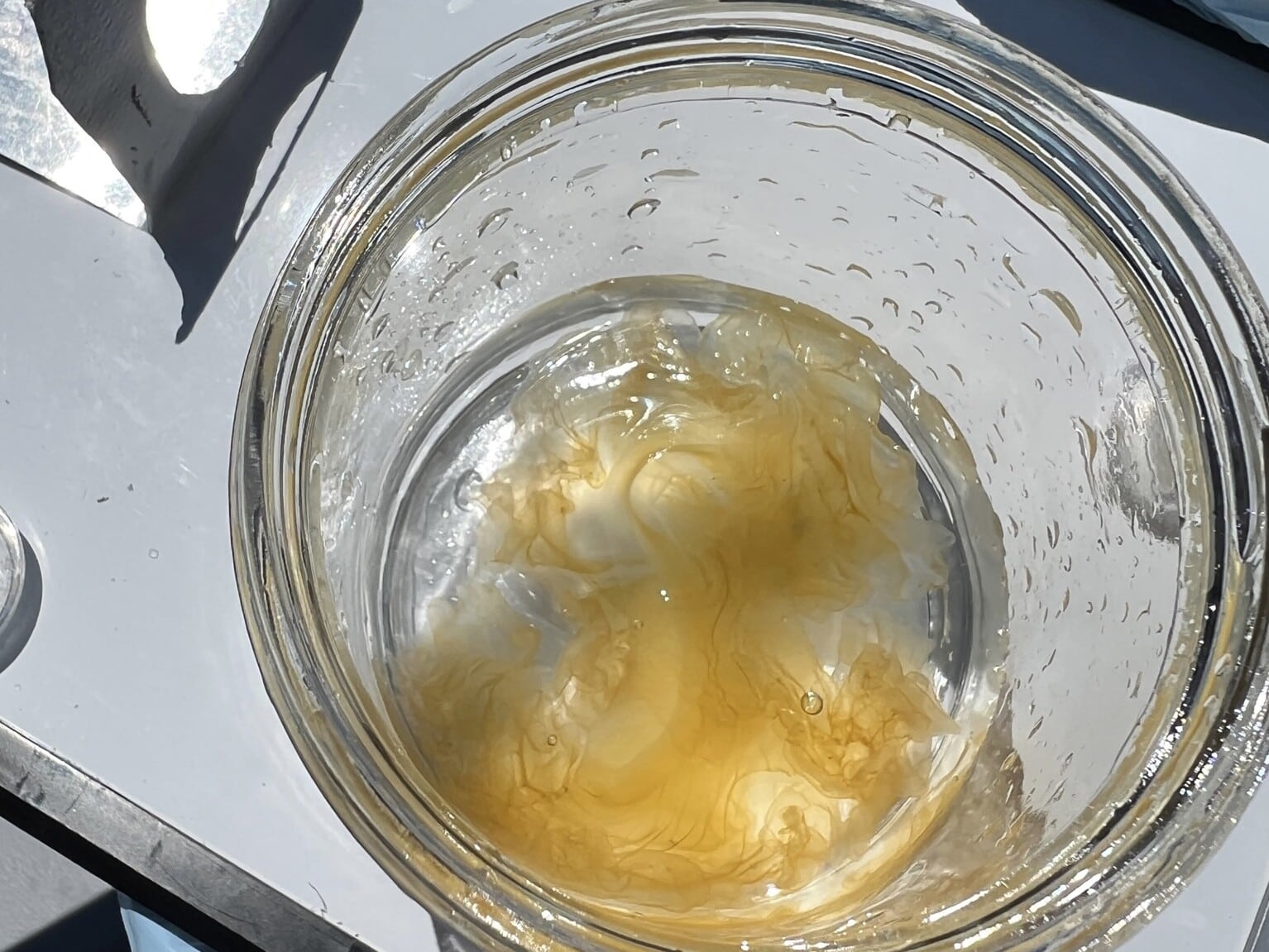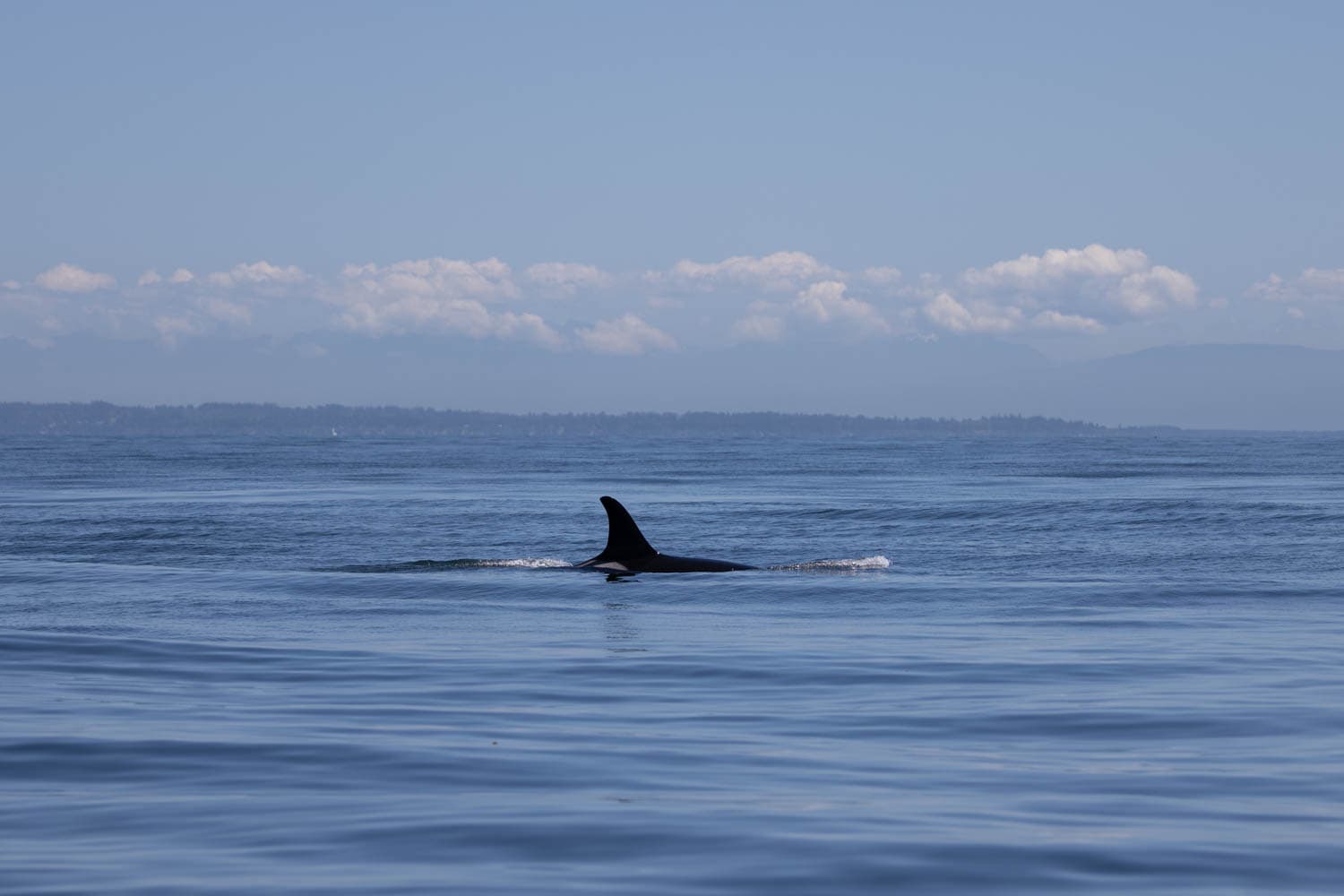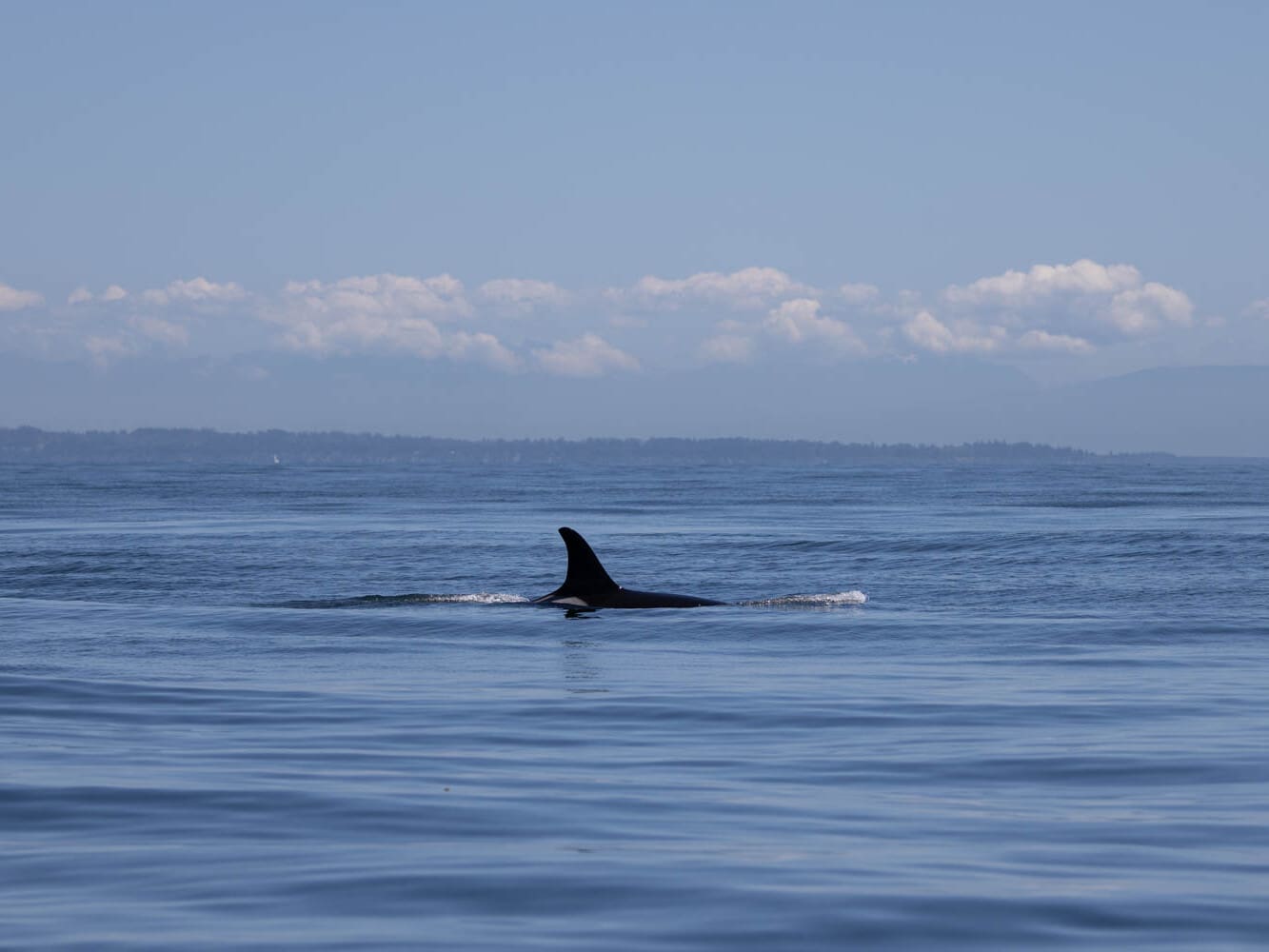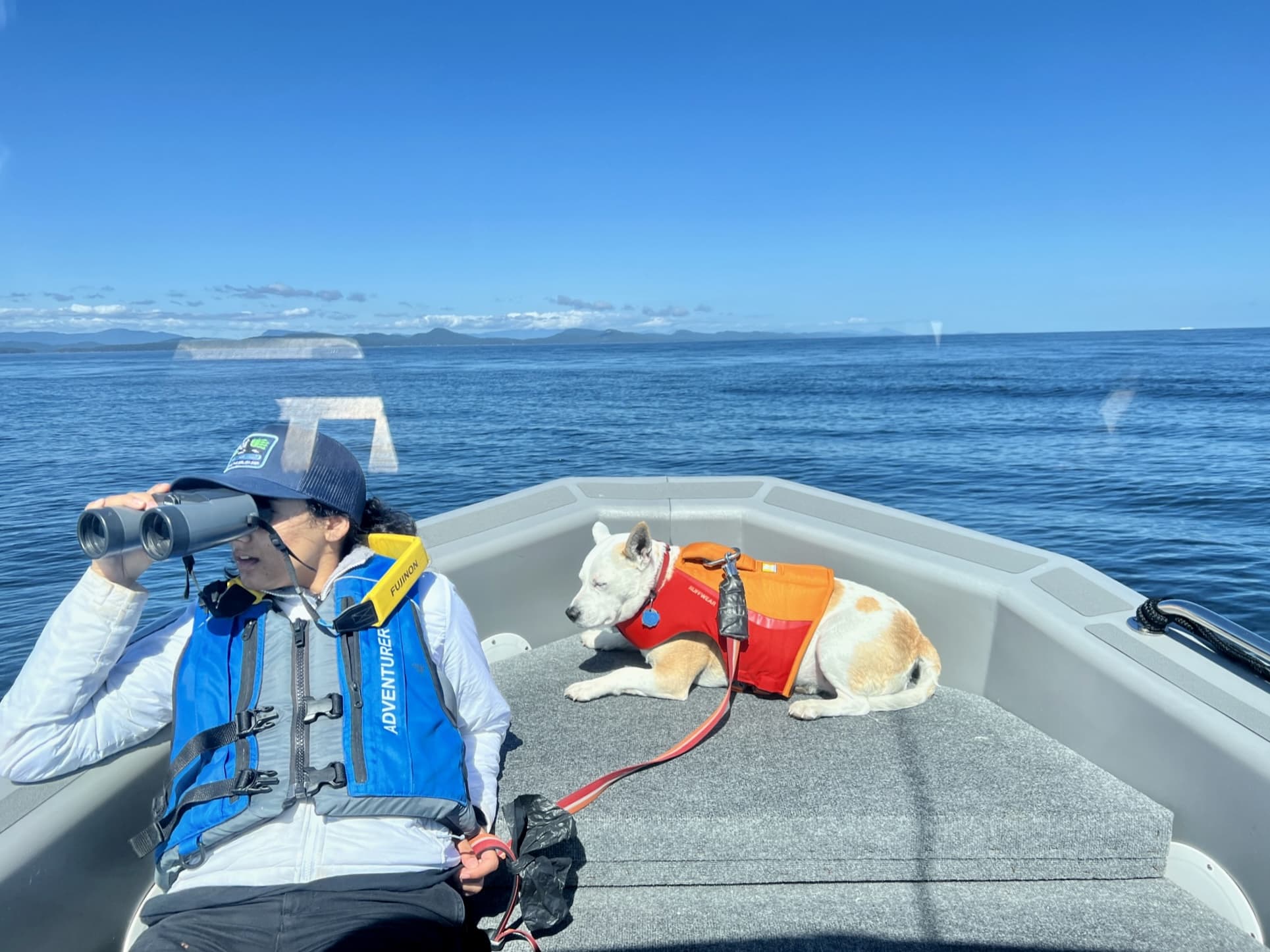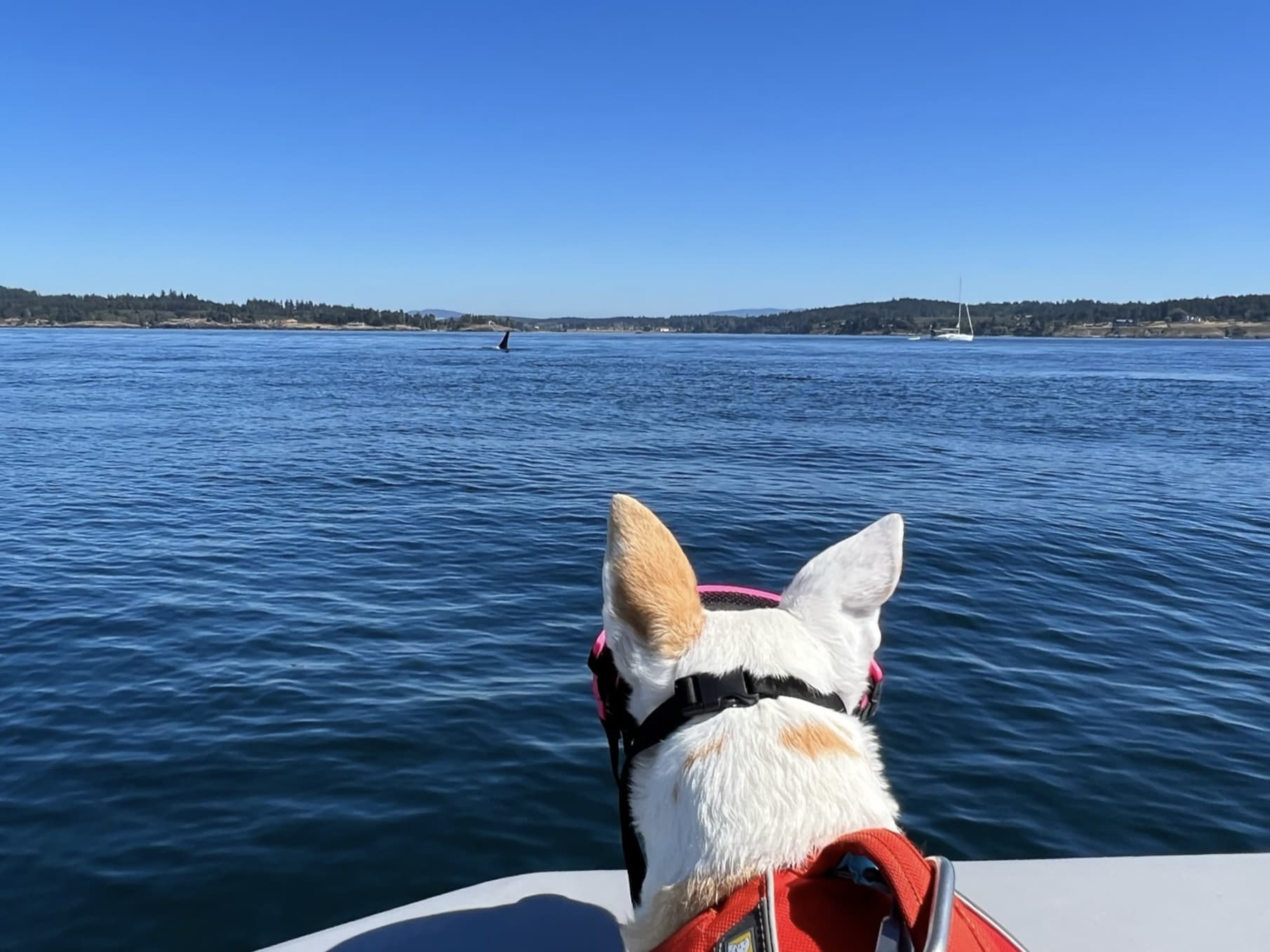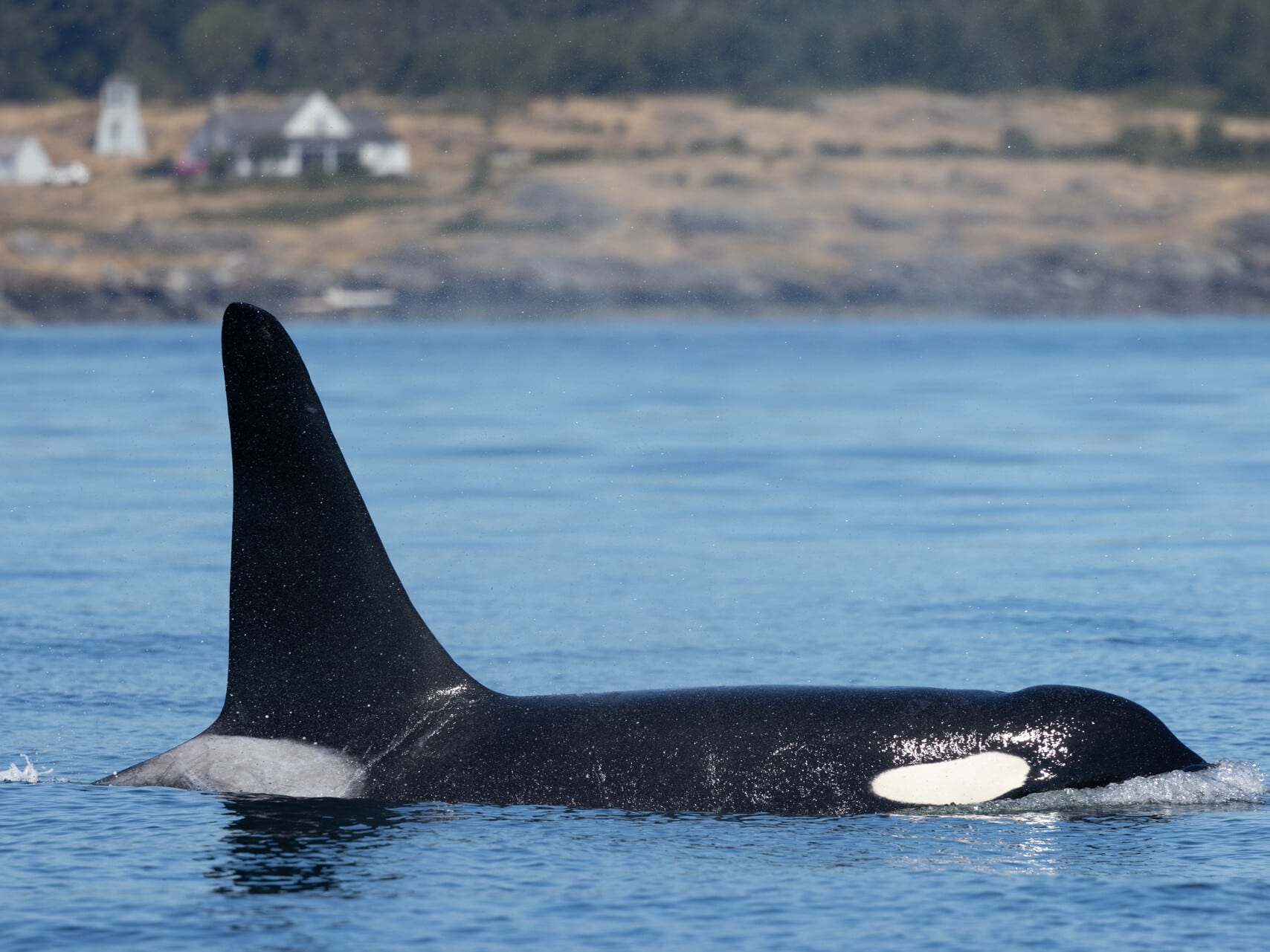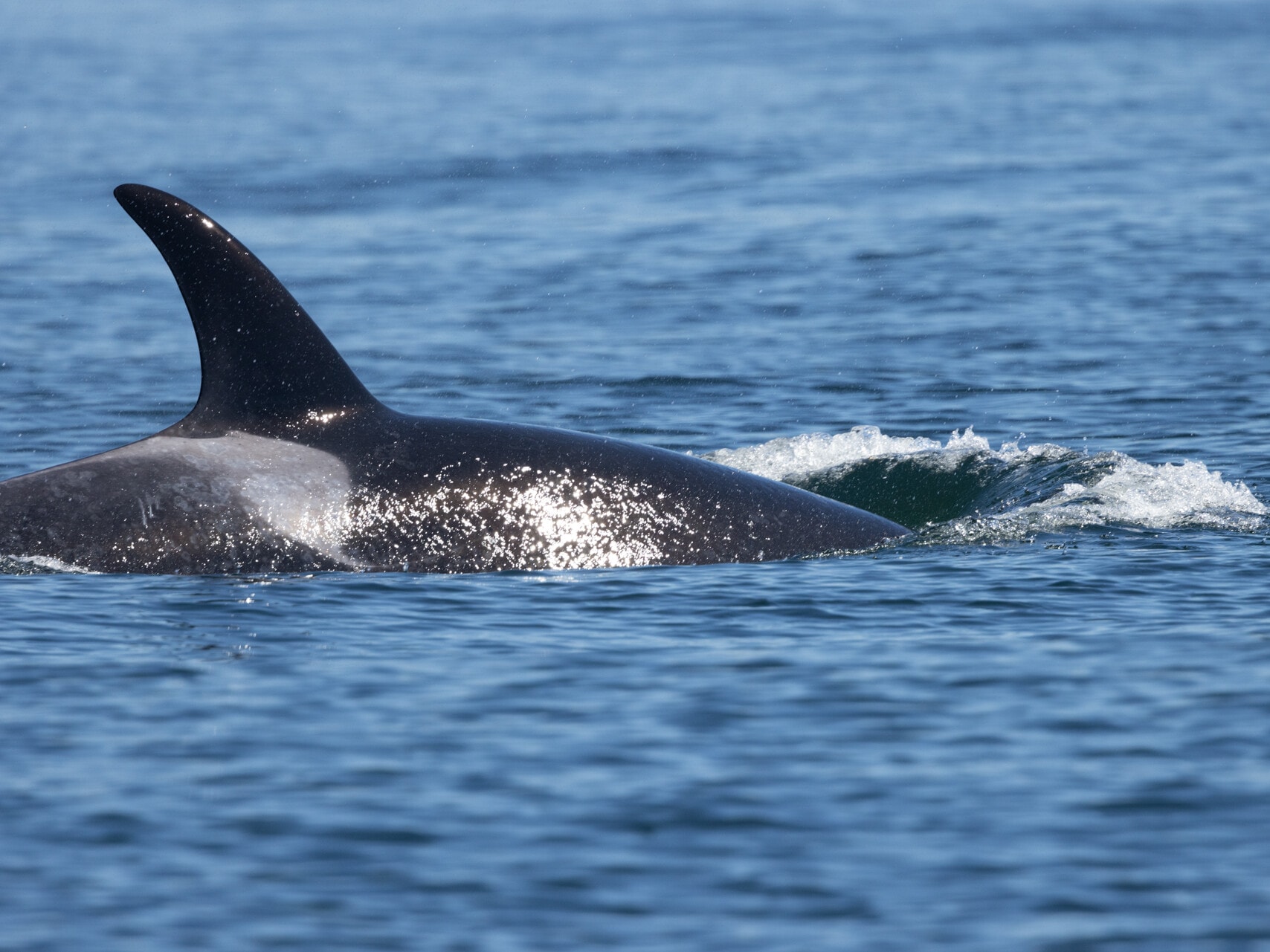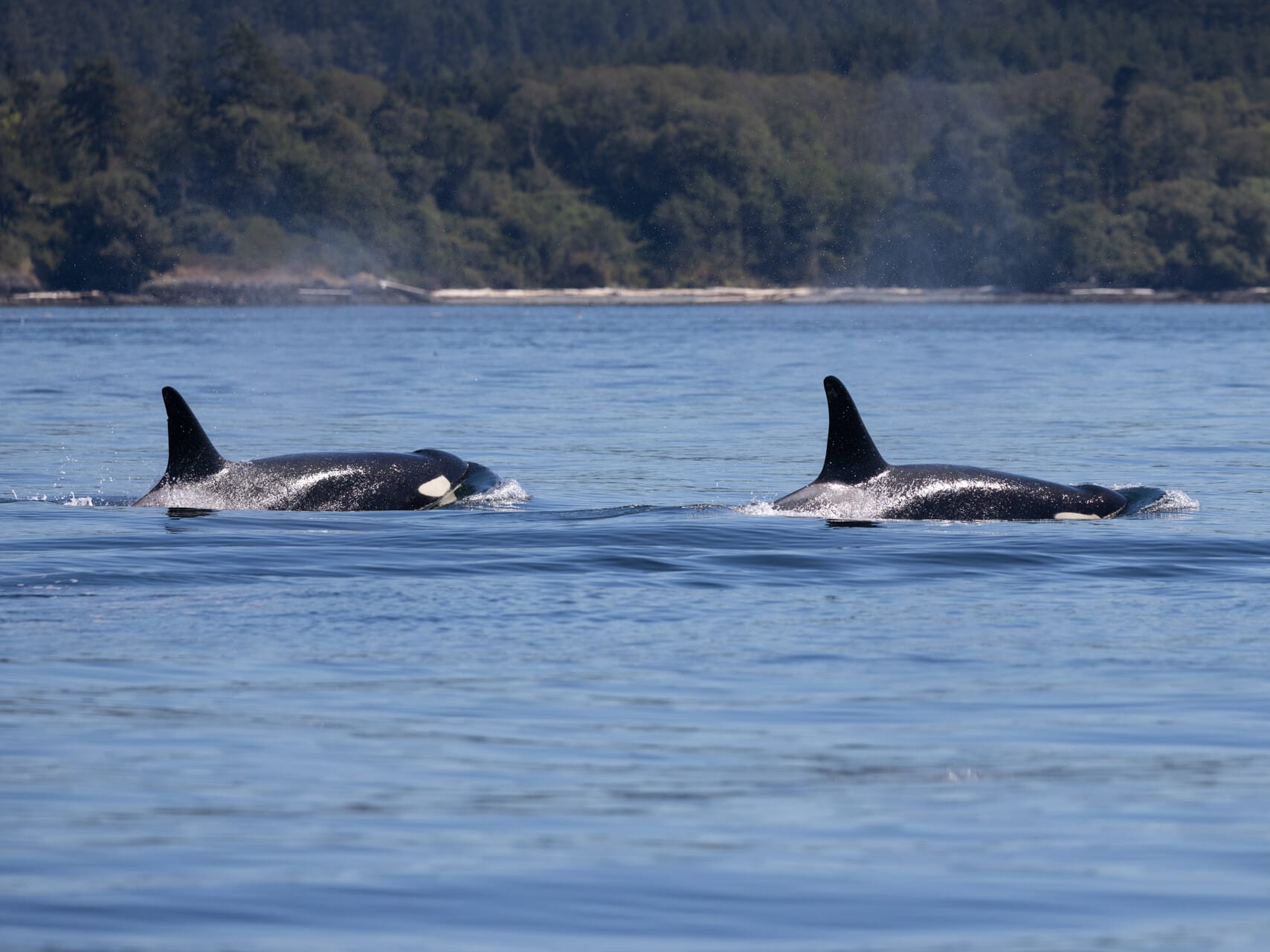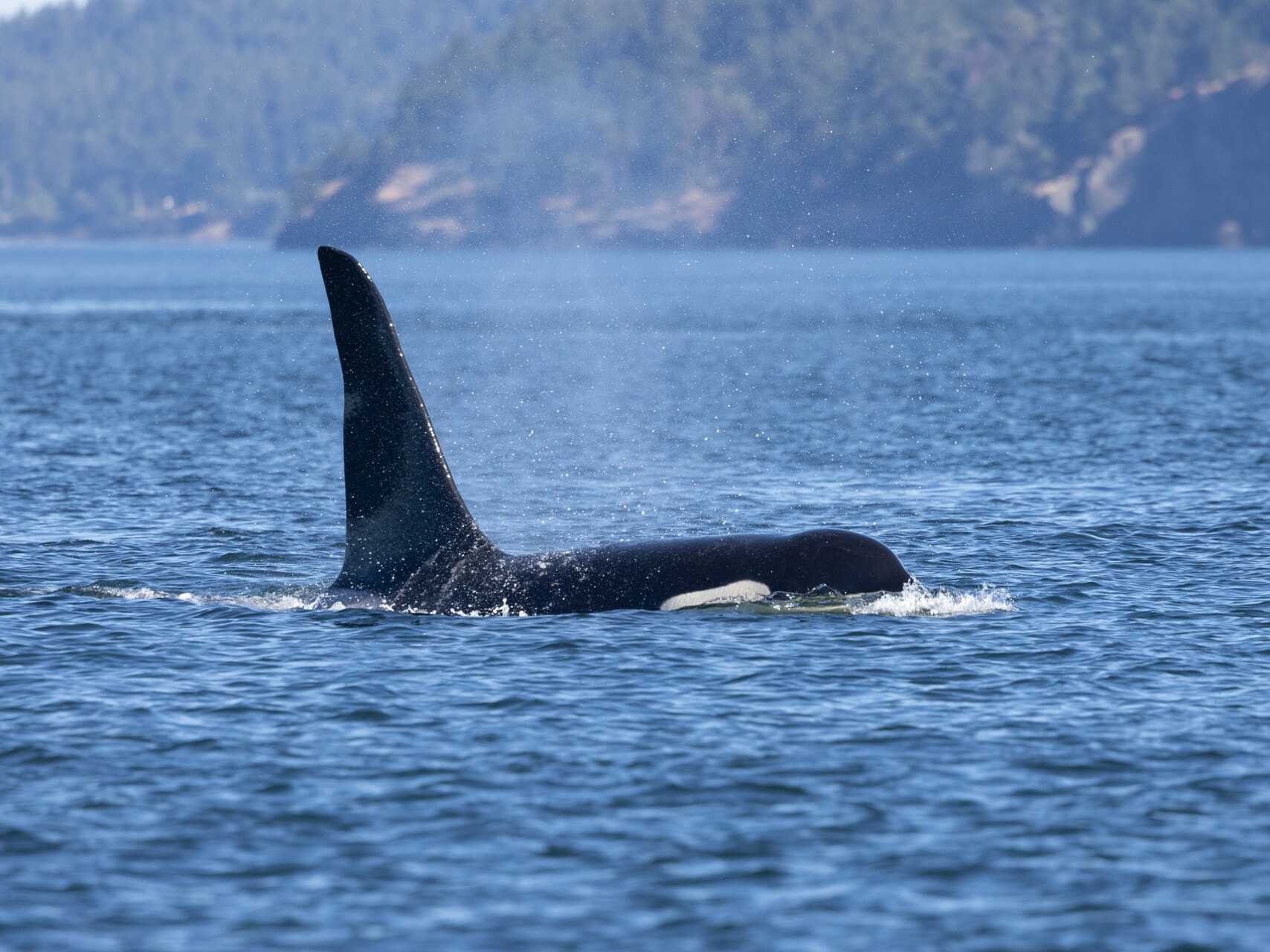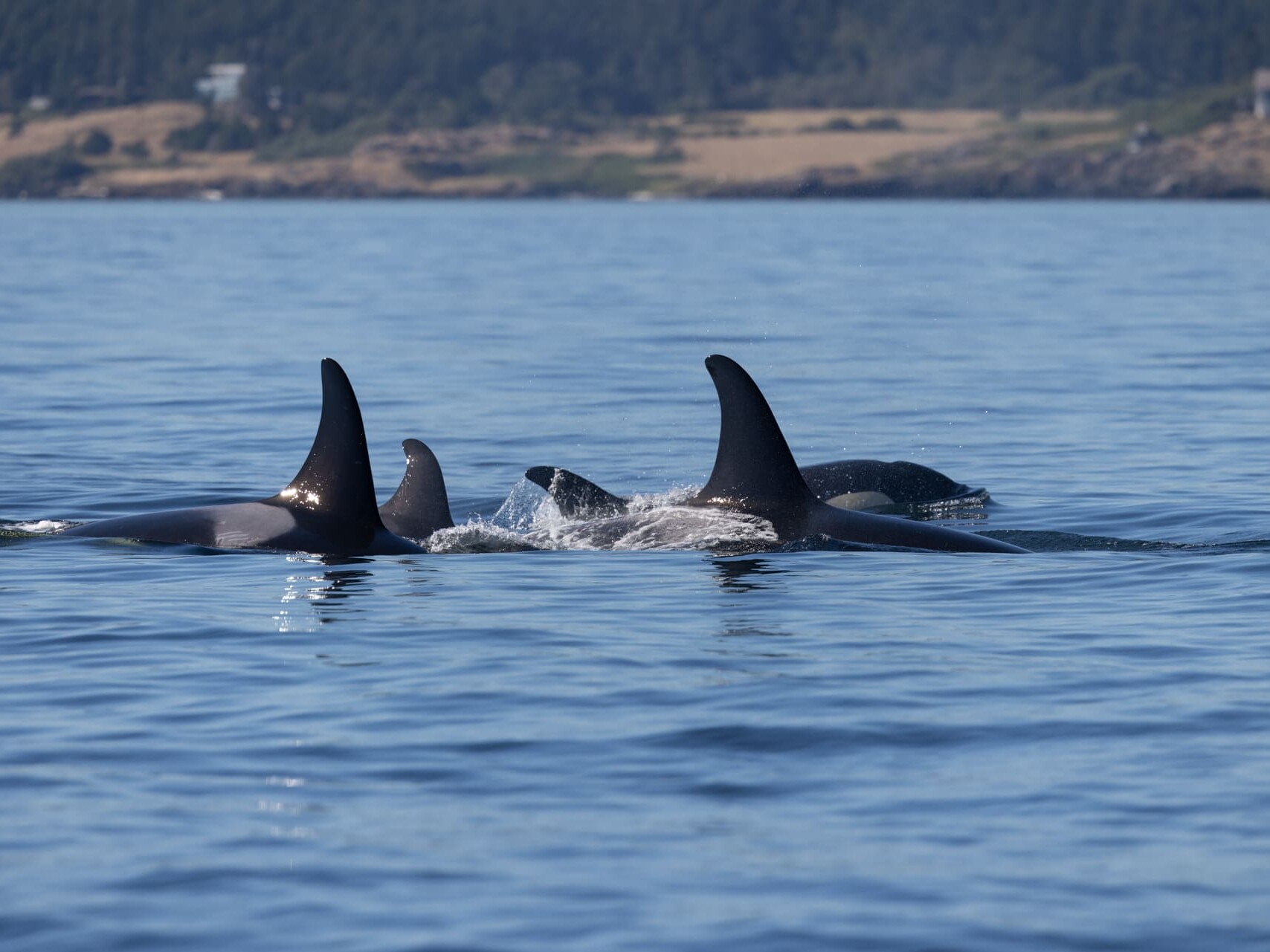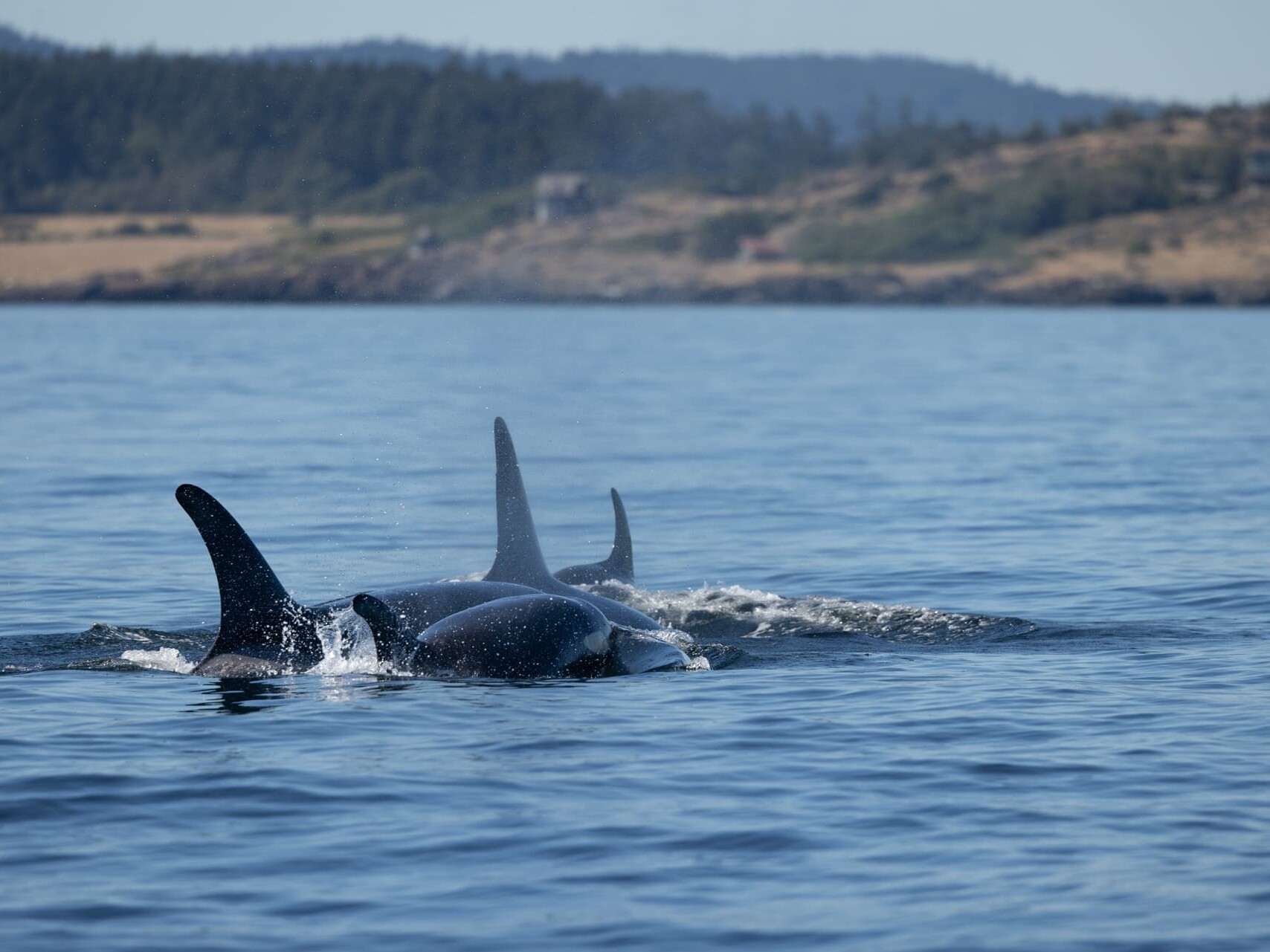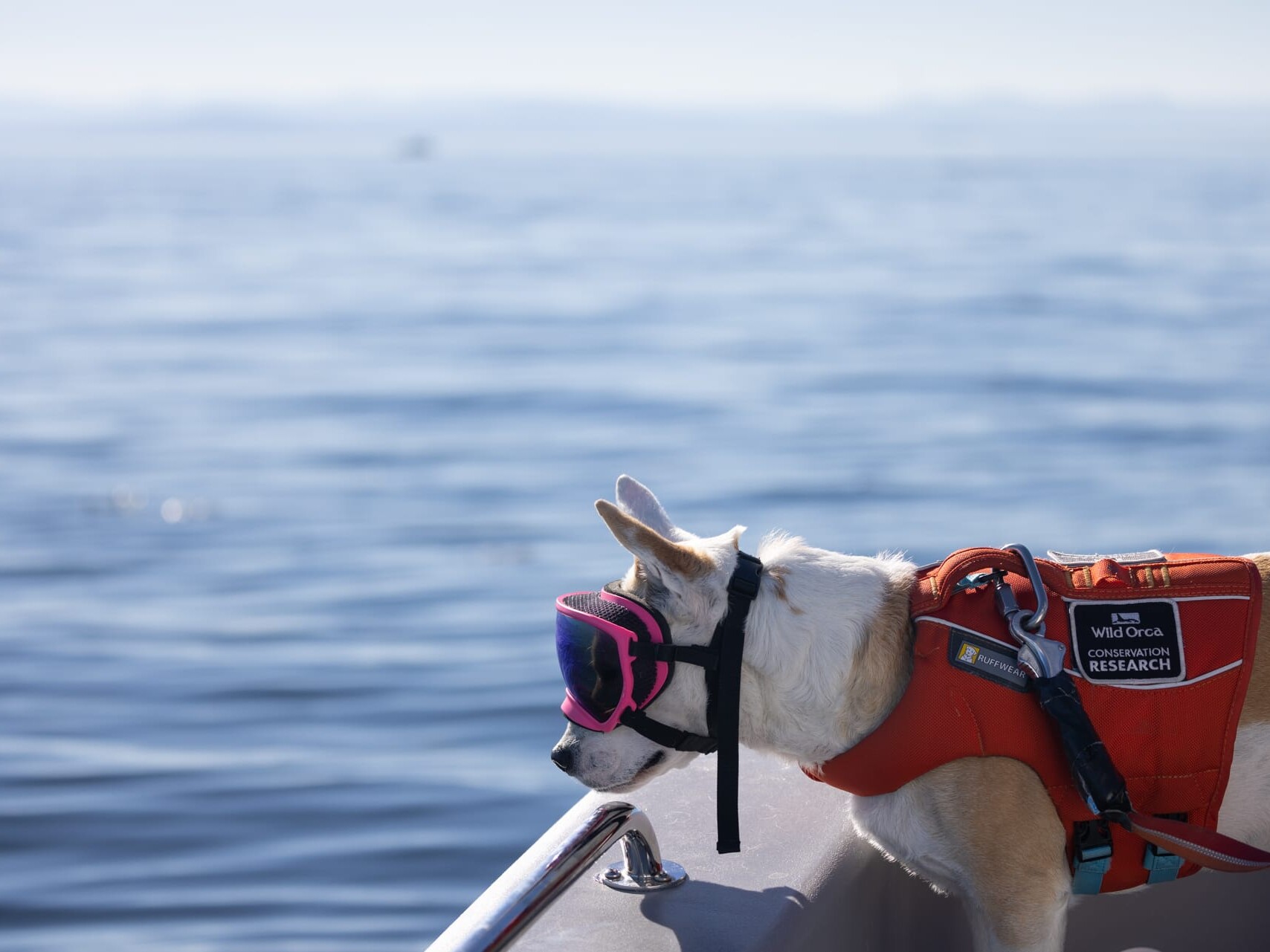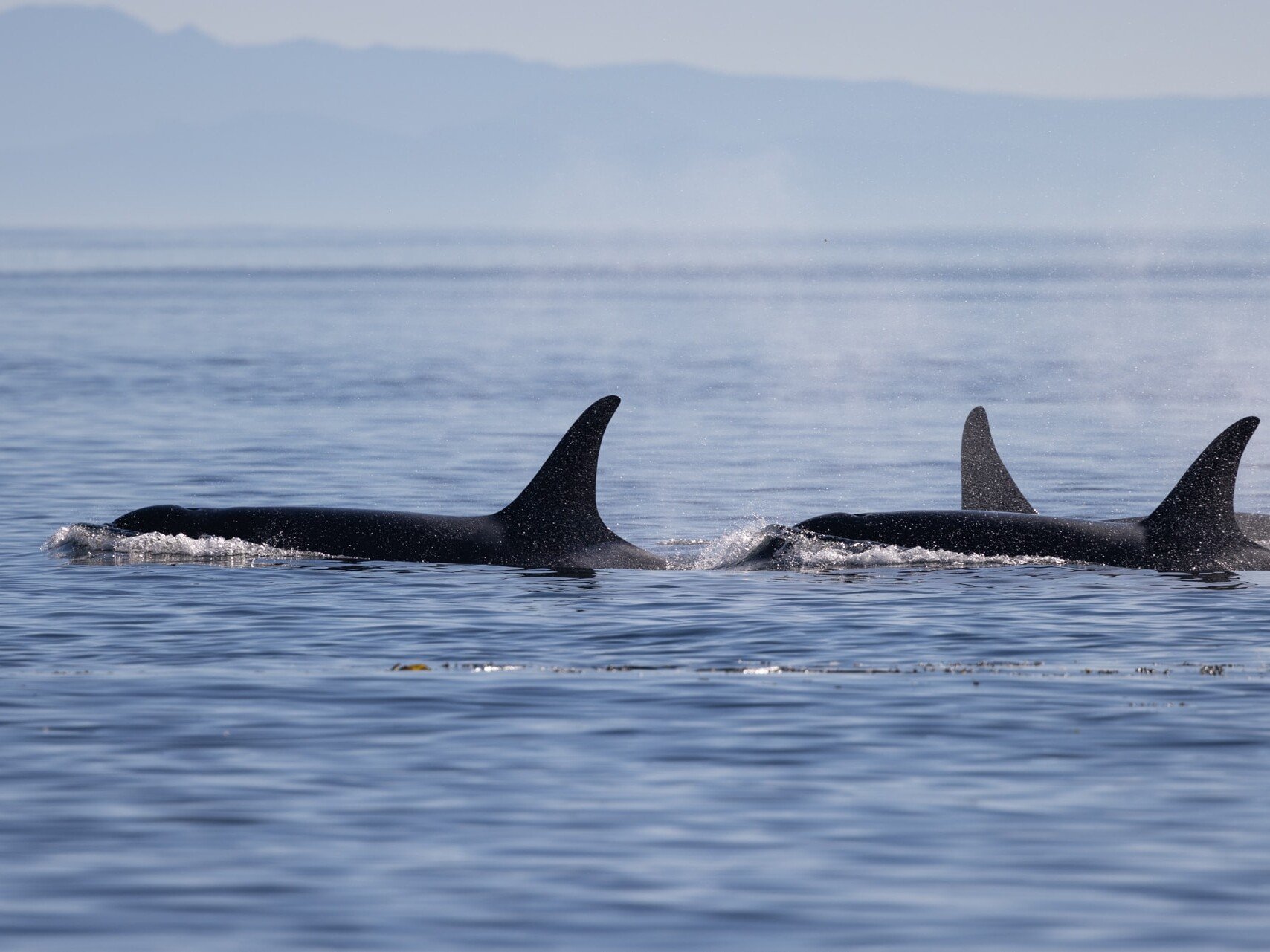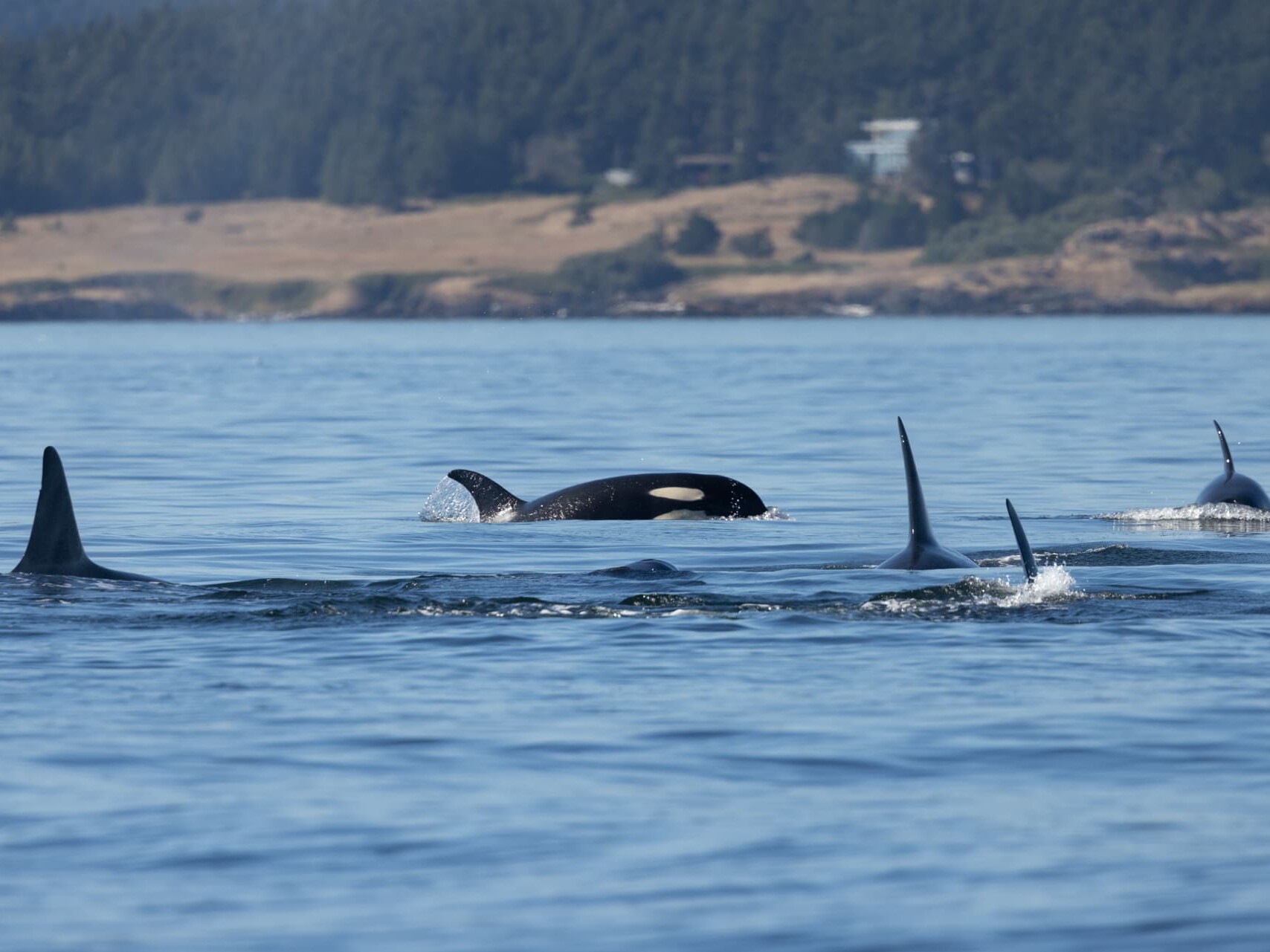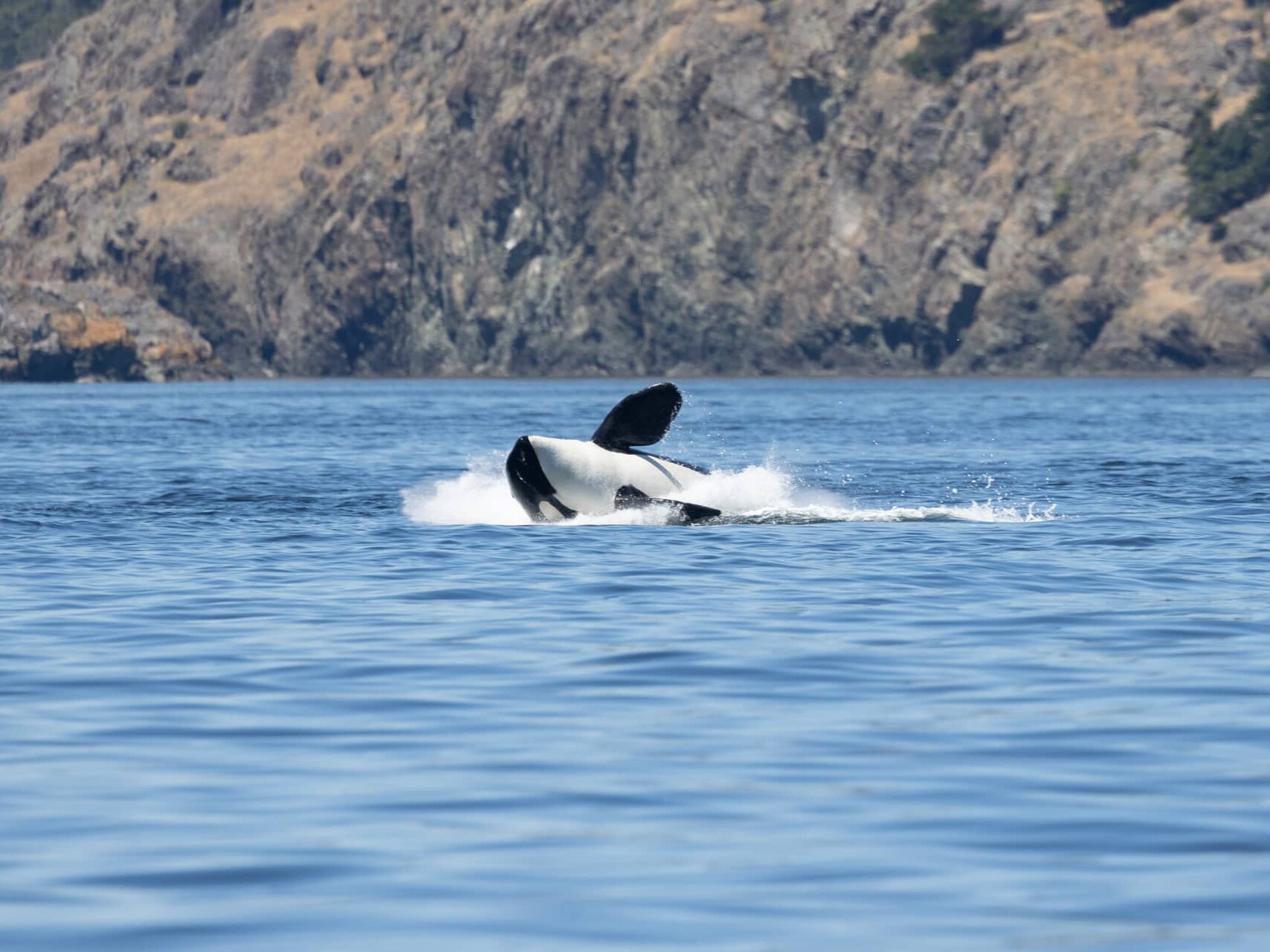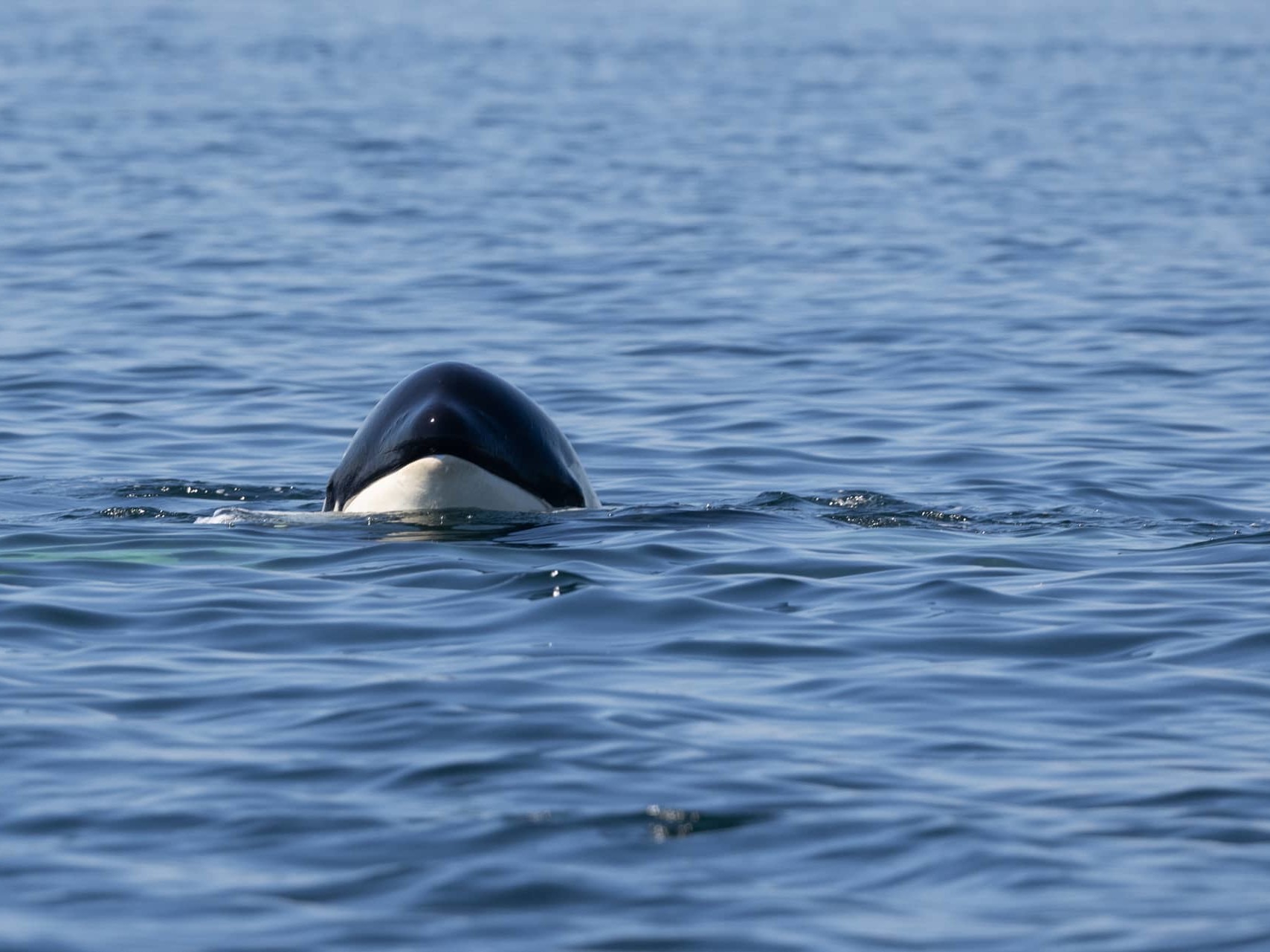J, K, & L Pod
The Wild Orca team, Giles, Jim, Aisha, and volunteer Robyn, set out on the water at noon. It was partly cloudy and 62 degrees Fahrenheit! As we headed down the island, we saw many jumping fish – a few groups of jumping Pink salmon. We saw some porpoises and arrived on the scene with Southern Resident killer whales at approximately 12:33 p.m. Yesterday, J, K, and L pods returned to the Salish Sea. Most of them headed north, but about nine whales stayed along the west side of San Juan Island. We found this group ¼ mile West of Eagle Point.
Shortly after we arrived, we learned of Tokitae’s passing. We were heartbroken to hear of her death and are still grieving the life that she endured. It was a tearful day on the water. She is family to so many, including the Wild Orca team. We are thinking of her, her relatives, and the communities that fought for her.
Of the nine whales on the west side, the L11 matriline, L54 matriline, and L25 were present. Tokitae’s closest living relative, L25, Ocean Sun – the only whale alive when she was born – was present on the west side that day.
With heavy hearts, we collected samples, remembered her life, and returned home in the early evening.
Rest in Peace Sk’aliCh’elh-tenaut
Research Vessel
R/V Cheena
Species
Southern Resident Killer Whales
Pods
J, K & L Pod
Research Activities
Fecal Sample Collection, Behavior Data
L Pod Calves
Giles, Jim, Aisha, and Sadie cast off from the dock at Snug Harbor at 10:30 AM to intesect with a group of Southern Resident killer whales that had been reported. We headed south along San Juan Island and found about 4 Southern Resident killer whales near Eagle Point. They switched directions many times and were milling and exhibiting forage behaviors. Two new calves were present, and we identified L113, L94, L126 and L127. All L12s were present but spread out for several miles. We found a sample that looked different than the rest. It looked very milky, and we suspect that it could be fecal matter from the calf containing milk. Our lab will be able to analyze this sample for DNA, allowing us to identify the individual it came from. We continued to trail the group towards the south, collecting additional fecal samples, and returned to Snug Harbor at 4:15 pm.
Research Vessel
R/V Cheena
Species
Southern Resident Killer Whales
Pods
L Pod
Research Activities
Fecal Collection, Behavior Data
J & L Pod
The team set out from Snug Harbor and headed north, where we located members of both J and L pods. We captured photographs and observed mostly travel behaviors. Several groups split off, but we remained behind a group of about ten whales to set ourselves up to collect the best samples.
It ended up being a very busy day, with large fecal samples spread around our area. We also found a sample of something that could be a placenta, plant matter, or possibly even a jellyfish. Our lab will analyze the material to provide a positive identification. With the help of Eba, our scent-detection dog, we were able to locate and collect several fecal samples.
Research Vessel
R/V Cheena
Species
Southern Resident Killer Whales
Pods
J Pod, L Pod
Research Activities
Fecal Collection, Behavior Data
J & L Pod
Our team departed the dock at Snug Harbor at approximately 9 am and headed northwest toward the Strait of Georgia. We stopped to scan 360 degrees with binoculars several times to try and spot the whales. After a brief fuel stop at Point Roberts, we arrived on scene with J and L pod. We observed many surface active behaviors, including tails, pec slapping, and cartwheels. The group was trending southwest, and we began to survey fecal samples. Eba performed wonderfully and led us to collect several fecal samples.
Research Vessel
R/V Cheena
Species
Southern Resident Killer Whales
Pods
J Pod, L Pod
Research Activities
Fecal Collection, Behavior Data
L Pod
We departed Snug Harbor just after 9 AM and joined up with the L12s. Our first fecal sample was a really nice sized brown mucousy sample likely from L85. We found it early in the morning very soon after we arrived on scene. Our next sample collection was very difficult. Eba worked really hard and lead us to a small green fecal sample that was small, but big enough to collect and analyze! It was a beautiful day and we stayed with the few members of the L12s until the group became more dispersed. We returned to Snug Harbor just after 3 PM.
J & L Pod
After receiving reports of Southern Resident killer whales, we departerd Snug Harboraround 2:30 PM when the slack tide began. We headed towards Eagle Point where we found most of J pod and L12s who spent the evening socializing and foraging. We observed and recorded many breaches, tail slaps, pec slaps, chartwheels and mating behavior. We continued to trail the group searching for fecal samples with the assistance of Eba, our scent detection dog. We had a beautiful evening as the sun sank low and the whales turned away from shore and we headed back to Snug Harbor for the night.
L Pod
We departed Snug Harbor at 10:30 AM and headed out to join up with a few members of L pod past South Beach on the South West side of San Juan Island. We picked up most of L pod at Davidson Rock in south Rosario Strait. We had a few great set ups where 5-6 individuals were grouped up side to side with nice calm water and some light wind. After sampling for most of the day, we returned to Snug Harbor just after 5 PM.
L Pod
We departed Snug Harbor just after 9 AM and joined up with members of the L12 matriline. We encountered both L77 and L88 several times throughout the day. We observed and recorded a lot of socializing at the surface, including tail slaps, breaching, rolling, and lifting. This was an excellent opportunity to collect fecal samples from L pod individuals we had not previously seen this season. We returned to Snug Harbor just after 3 PM and returned to our office to process and store fecal samples collected during the day.



